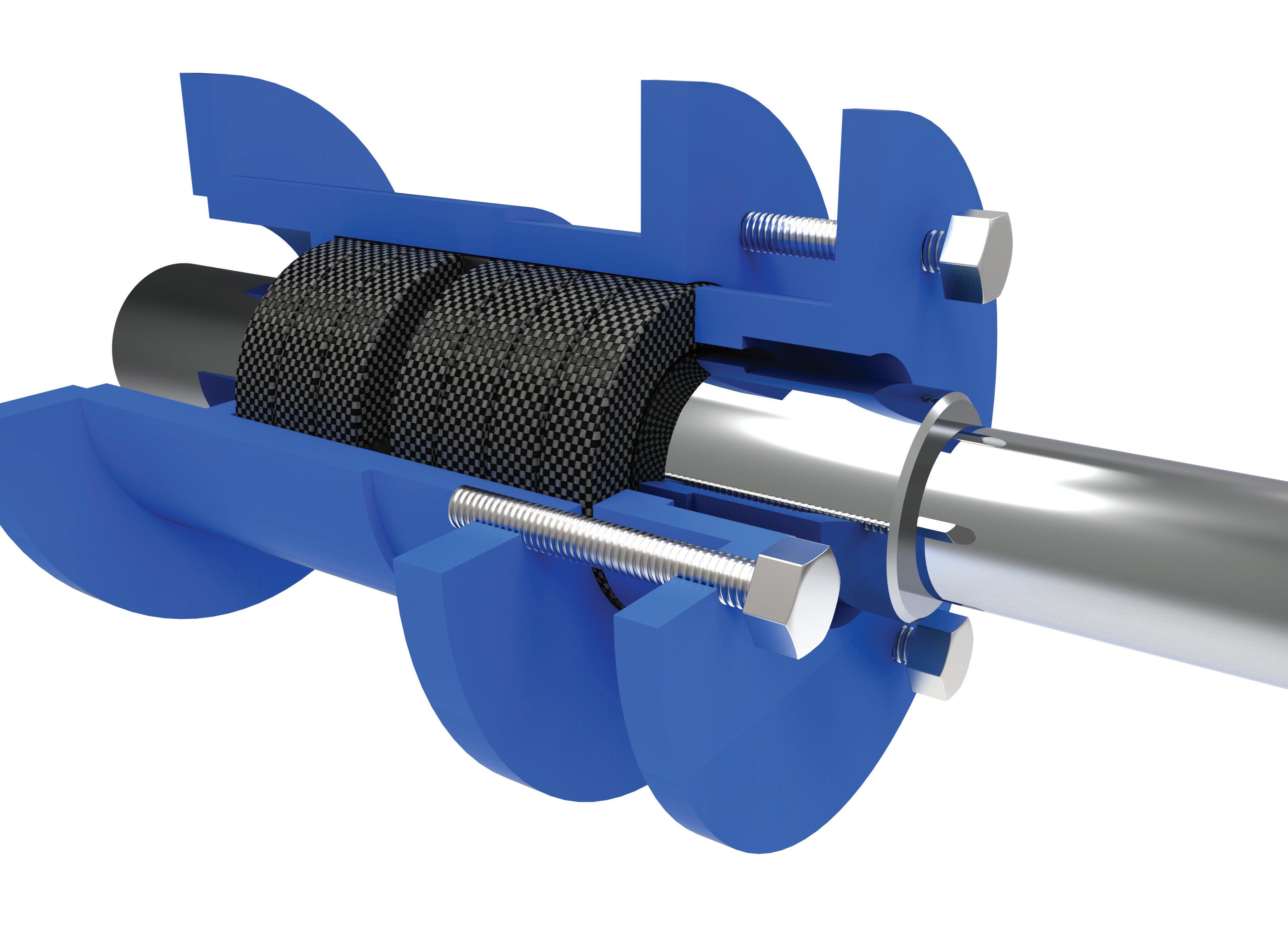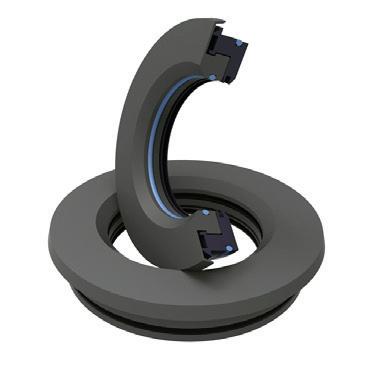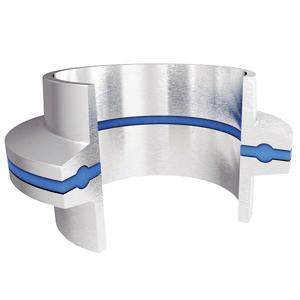

ENGINEERED TO MOVE:











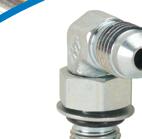



Hydraulic Components In-stock and at great prices




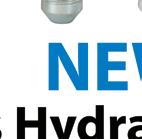










Hydraulic Cylinders
starting at $462.00 (HP16150A1S)














AutomationDirect carries Peninsular NFPA hydraulic cylinders that are in stock and ready to ship to you. No long lead times for made-to-order cylinders. Many bolt-on mounting options allow for installation flexibility and replacement of existing cylinder installations.
• Interchangeable with other popular brand of NFPA cylinders
• Available bore sizes: 1-1/2”, 2”, 2-1/2”, 3-1/4”, 4”
• Wide selection of stroke lengths
• All models are double-acting
• Tapped end caps for mounting accessories
• 3000 psi working pressure
• Temperature range is −20° F to 200° F
• Made in the USA



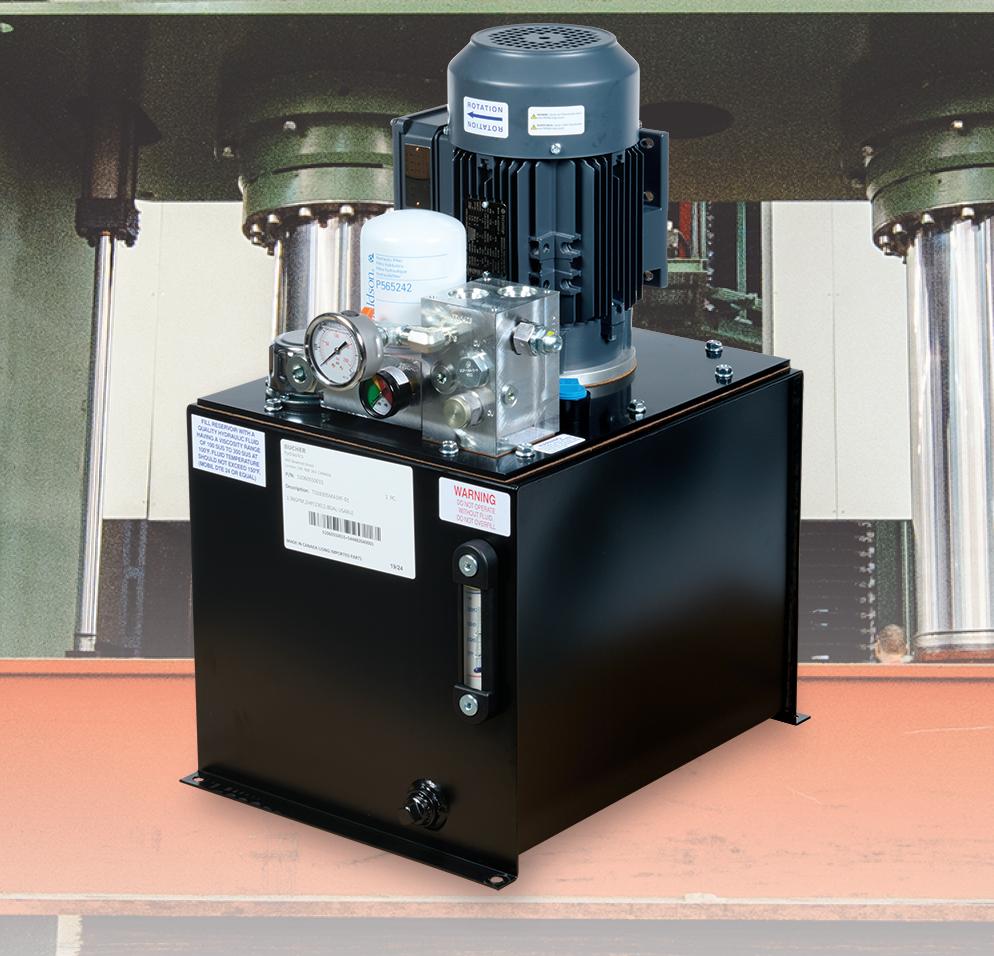



starting at $1,713.00 (51045050002)
Hydraulic power units (HPUs) are the lifeblood of hydraulic systems. These all-in-one units generate the needed pressure for flow of hydraulic fluid through the system. HPUs from Bucher Hydraulics provide everything needed to supply fluid for proper hydraulic system operation.

• Totally enclosed fan-cooled Premium Efficiency electric motor, rated for 60 Hz (will also work with some 50 Hz voltages)
• Powder-coated reservoir plumbed for vertical mounting
• Adjustable safety relief valve preset at factory
• Return line spin-on type filter with visual by-pass indicator
• Two extra 1” NPT couplings through the top of the reservoir for electrical sensors if remote live data of level or temperature is needed
• ¾” NPT drain port on lower front/side of the reservoir

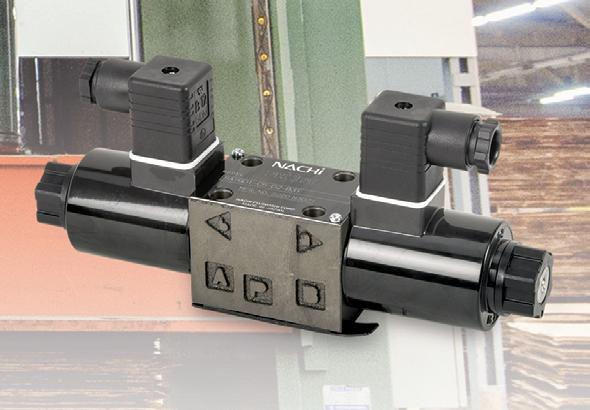


Hydraulic Solenoid Valves
starting at $288.00 (50020851098714)

Hydraulic solenoid valves control hydraulic fluid flow throughout the system and direct the fluid to where it is needed to operate actuators, which may include cylinders and hydraulic motors. Bucher hydraulic solenoid valves are available in a variety of configurations.
• 4-port, 4-way, 3-position, in NFPA D03 and D05 patterns
• Center configurations for D03 versions include tandem, closed, open, or float styles
• Center configurations for D05 versions include tandem or open styles
• 120 VAC or 24 VDC double solenoids
• Manual overrides
• Can be mounted directly on HPU or machine-mounted
price, buy at: www.automationdirect.com/hydraulic-components
Orders over $49 get FAST FREE SHIPPING
shipping policies
Fast free standard shipping* is available for most orders over $49 U.S., and that includes the brokerage fees (when using an AutomationDirect nominated broker). Using our choice of carrier, we can reach most Canadian destinations within 2 to 3 days.
*Free shipping does not apply to items requiring LTL transport, but those shipments can take advantage of our negotiated super-low at rates (based on weight) that include brokerage fees.
See Web site for details and restrictions at: www.automationdirect.com/canada



Hydraulic Power Units
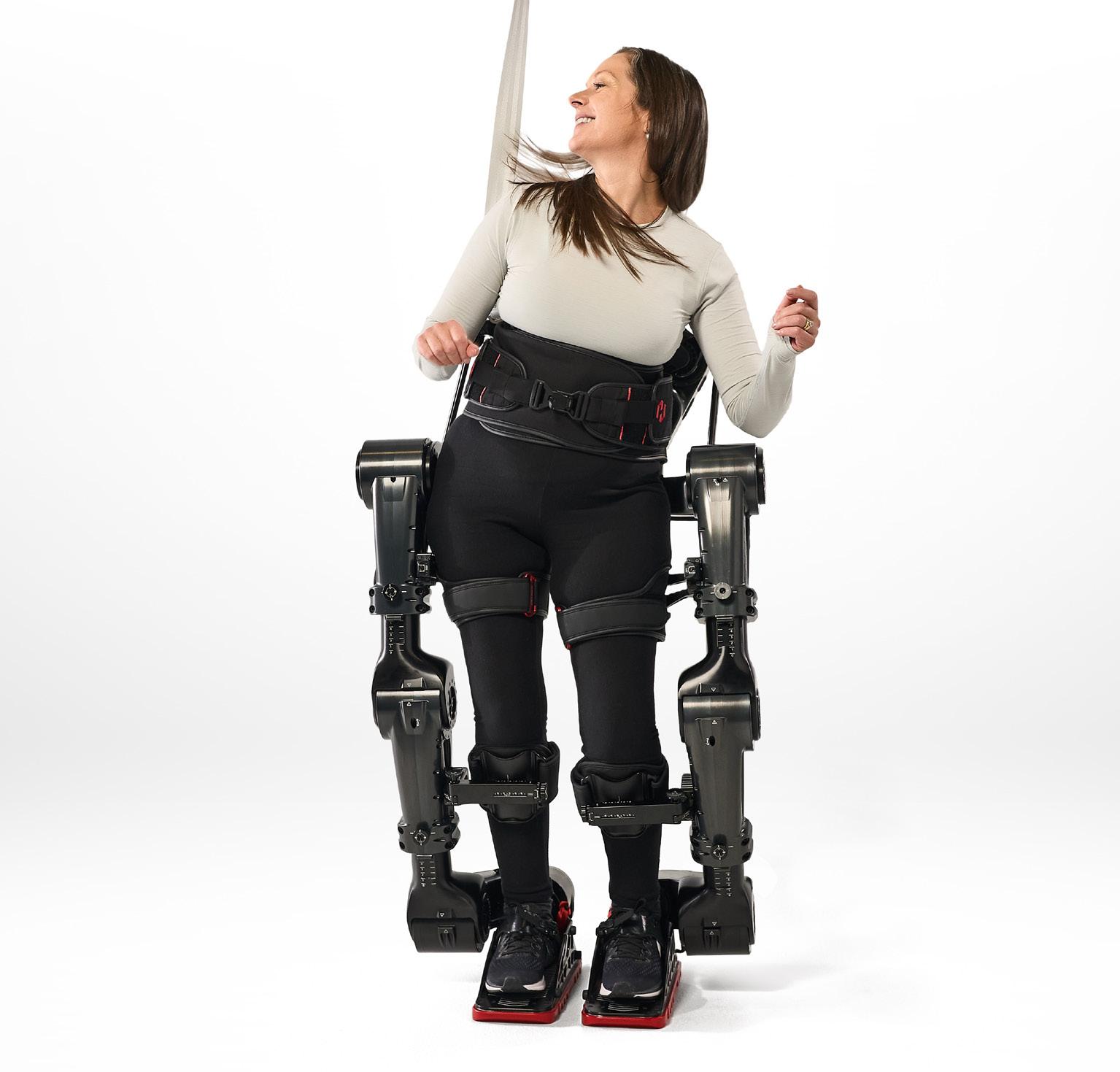
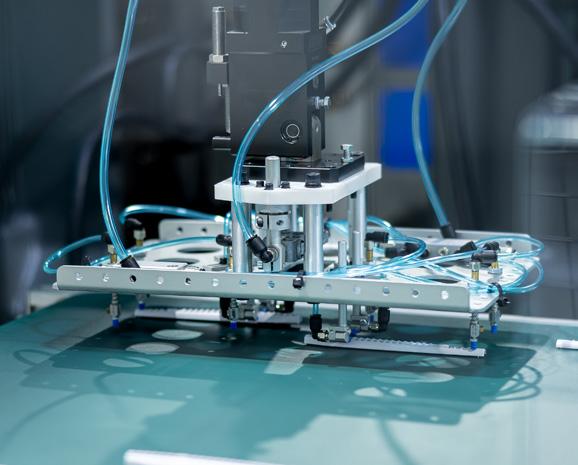
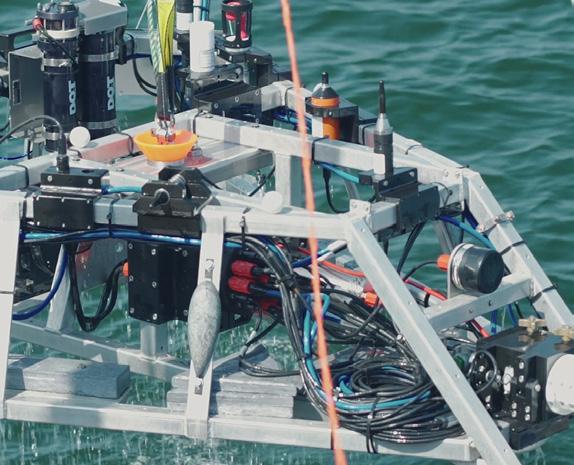



Canadian MedTech innovation is alive and well
When it comes to the development of cutting-edge, state-of-the-art MedTech innovations that improve and, indeed, save the lives of countless individuals, few countries in the world boast a legacy of achievement as healthy or as storied as Canada’s. From the discovery of insulin, advances in cancer treatment and the development of the cardiac pacemaker to portable defibrillators, robotic surgical systems and bionic eye technology, Canadian MedTech innovators are regularly lauded globally for their contributions and breakthroughs.
Within this edition of Design Engineering magazine, we explore some of the incredible advances currently impacting the Canadian medical life sciences and healthcare industries, patient outcomes and the future of medical device development.
Siamak Arzanpour and Chloe Angus from Human in Motion Robotics walk us through the engineering ingenuity behind the development of the company’s XoMotion self-balancing exoskeleton, while breaking down the technical complexities of the advancement that’s changing the lives of individuals with mobility challenges.
We sit down with David Van Slingerland, CEO of Sterling Industries - one of Canada’s leading medical device developers - to discuss the current state of the Canadian MedTech sector, some of the challenges and opportunities faced by medical device manufacturers, and the company’s philosophy and engineering culture that’s enabled its continued growth and success.
Beyond MedTech, we examine some of the latest fluid power trends and innovations, the testing and measurement involved in meeting high performance demands, and the robotics-driven construction initiative that’s set to address Canada’s growing housing crisis.
All of this and more is within this edition of Design Engineering magazine. I sincerely hope that you and your teams find the content insightful and informative and will look forward to receiving feedback that can help us enhance our industry coverage further. |DE
SEPTEMBER 2025
Volume 70, No.4
design-engineering.com
READER SERVICE
Print and digital subsciption inquiries or changes, please contact Angelita Potal
Tel: (416) 510-5113
Fax: (416) 510-6875
Email: apotal@annexbusinessmedia.com
Mail: 111 Gordon Baker Rd., Suite 400, Toronto ON M2H 3R1
EDITOR Sean Tarry (416) 510-5244 • starry@annexbusinessmedia.com
BRAND SALES MANAGER Trish Sutton (437) 995-4651 • tsutton@annexbusinessmedia.com
ACCOUNT COORDINATOR Cheryl Fisher (416) 510-5194 • cfisher@annexbusinessmedia.com
GROUP PUBLISHER Anne Beswick (416) 510-5248 • abeswick@annexbusinessmedia.com
AUDIENCE DEVELOPMENT MANAGER Beata Olechnowicz (416) 510-5182 • bolechnowicz@annexbusinessmedia.com
CEO Scott Jamieson sjamieson@annexbusinessmedia.com
Design Engineering, established in 1955, is published by Annex Business Media, 5 times per year except for occasional combined, expanded or premium issues, which count as two subscription issues.
Printed in Canada
Publications Mail Agreement #40065710
ISSN: 0011-9342 (Print), 1929-6452 (Online)
Subscriber Services: Canada: $58.65 for 1 year; $94.35 for 2 years;
Outside Canada: USA - $143.31; Overseas - $154.02; $10.00 for single copy.
All prices in CAD funds.
Add applicable taxes to Canadian rates.
From time to time we make our subscription list available to select companies and organizations whose product or service may interest you. If you prefer not to receive this information, please contact our circulation department in any of the four ways listed above.
Annex Business Media Privacy Officer: privacy@annexbusinessmedia.com
Tel: 800-668-2374
No part of the editorial content of this publication may be reprinted without the publisher’s written permission.
SEAN TARRY Editor starry@annexbusinessmedia.com
Editorial Board

DR. MARY WELLS, P.ENG Dean, Faculty of Engineering, University of Waterloo

KEVIN
BAILEY CEO, Design 1st

MASSIMILIANO MORUZZI CEO, Xaba

JAYSON
MYERS CEO, NGen Canada
©2025 Annex Business Media. All rights reserved. DE receives unsolicited features and materials (including letters to the editor) from time to time. DE, its affiliates and assignees may use, reproduce, publish, re-publish, distribute, store and archive such submissions in whole or in part in any form or medium whatsoever, without compensation of any sort. DE accepts no responsibility or liability for claims made for any product or service reported or advertised in this issue. DE is indexed in the Canadian Business Index by Micromedia Ltd., Toronto, and is available on-line in the Canadian Business & Current Affairs Database.


To build your financial future
The Engineers Canada-sponsored Group Savings and Retirement Program offers a range of plans with Canada Life to help you grow your savings then turn your savings into income for your retirement years.
Personalized guidance to help you reach new heights
As an engineer or geoscientist, you know that nothing should be built without a solid foundation. That’s where your personal health and wealth consultant comes in. They’re licensed professionals who can:
Meet with you online – when it’s convenient for you
Help guide you through all stages of your financial journey
Talk to you in more than 12 languages
Plus, being part of a group plan means you get to enjoy lower-than-retail fees* – which means more money for you!
Take it from those** who have met with a health and wealth consultant:
97% said they felt valued
98%
felt they were spoken to in a way that was easy to understand
98%
said all their questions were answered on their personal needs
AEROSPACE
AIRBUS HELICOPTERS OPENS ADVANCED DISTRIBUTION CENTRE IN ONTARIO
Airbus Helicopters Canada recently opened a 21,000 square foot integrated distribution centre in Fort Erie, Ontario, expanding its footprint in the Canadian aerospace sector.
The impressive new facility enhances spare parts storage, accelerates shipping timelines and supports helicopter completions, component repair and advanced composite manufacturing for the company. It’s a strategic move that should serve to optimize logistics and inventory management, while sustaining over 300 skilled jobs.
The expansion also enables increased capacity at the adjacent manufacturing centre, driven by demand for twin-engine helicopters like the H135. And it signals intent from Airbus to continue to strengthen its ties with Canadian suppliers, further reinforcing Ontario’s role as an aerospace manufacturing hub.
ENERGY
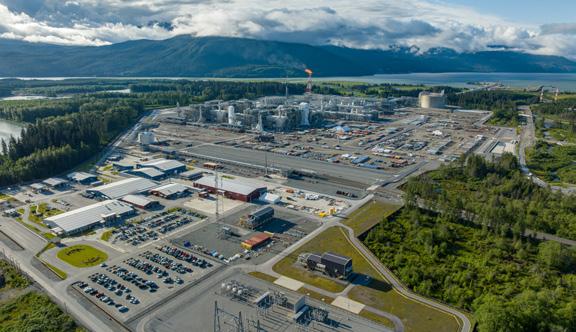
FLUOR JV SECURES FEED CONTRACT FOR LNG CANADA PHASE 2 EXPANSION
Fluor Corporation and JGC Corporation have been awarded the Front End Engineering and Design (FEED) contract for a proposed Phase 2 expansion of the LNG Canada facility in Kitimat, British Columbia.
Building on their success in Phase 1, which is now operational and exporting LNG, the joint venture will assess expanding

processing, storage and shipping capacity. This second phase would also bolster Canada’s position as a global low-carbon LNG supplier.
In addition, the project signals upcoming demand for modular systems, process equipment and infrastructure to support large-scale, energy-efficient gas liquefaction and export capabilities.
AEROSPACE
NSERC FUNDING BOOSTS HORIZON AIRCRAFT’S HYBRID EVTOL DEVELOPMENT AND COLLABORATION WITH CANADIAN INSTITUTIONS
Horizon Aircraft has received an additional $450,000 in federal funding through Canada’s Natural Sciences and Engineering Research Council (NSERC) Applied Research and Development (ARD) grant program, bringing the total NSERC support it’s received to more than $3.4 million.
The funding will support Horizon’s continued development of its hybrid-electric Vertical Take-Off and Landing (eVTOL) aircraft through a multi-year research and development collaboration with Fleming College and Ontario Tech University.
In addition, the funding also helps accelerate the design and engineering of Horizon’s Cavorite X7, a piloted, full-scale hybrid-electric
prototype capable of transitioning between vertical and fixed-wing flight using the company’s patented fan-in-wing technology. The aircraft aims to combine the operational versatility of a helicopter with the speed, range and efficiency of traditional aircraft, offering significant implications for emergency response, regional transport and military use.
The collaborative partnership with Fleming and Ontario Tech brings together expertise in applied engineering, electrified propulsion systems and advanced manufacturing - fields of growing importance as electric aviation gains momentum.
And, according to Brandon Robinson, CEO of Horizon Aircraft, it’s a project that should secure a foundation for Canadian innovators moving forward.
“Canada’s continued support demonstrates the recognition of the strategic importance of cutting-edge aerospace development and that it is clearly looking to build upon that national strength,” he says. “This support has accelerated our ability to attract and retain skilled workers, develop world-class innovative technologies and bolster Canadian industry.”
With its recent milestone - the world’s first successful fan-in-wing transition flight - Horizon continues to lead in hybrid eVTOL innovation. Its next move is to complete testing and certification of the Cavorite X7 before entering scaled manufacturing.
Airbus’ new integrated distribution centre in Fort Erie, Ontario.



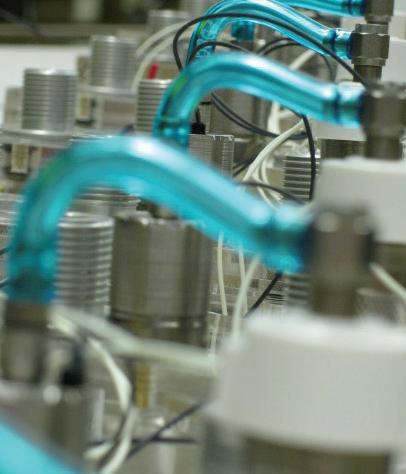

Precision Control Solutions
Designing efficient systems involves much more than simply understanding a few basic principles. There is a true art to balancing the specific requirements of an application in order to achieve the desired goals in the best possible way. Help us understand the unique needs of your application and together, we’ll develop something that surpasses what any of us could have done alone.
Contact wainbee.com to learn more, or visit clippard.com to request free literature.


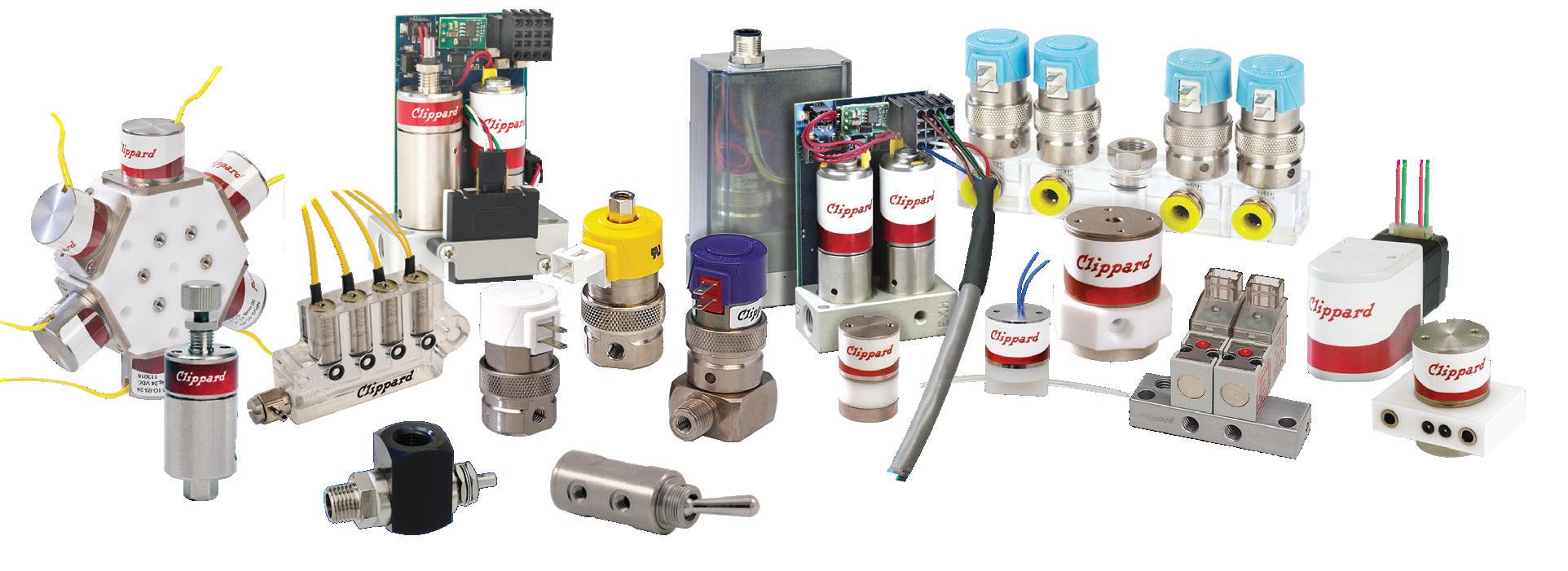
FROM DIAL-UP TO ADVANCED CAD
The digital awakening of design engineering in the nineties and beyond the noughties.
BY SEAN TARRY
The 1990s and 2000s proved to be transformative decades for design engineers, marked by rapid technological advances and the integration of digital tools. One of the most significant breakthroughs was the widespread adoption of Computer-Aided Design (CAD) software, which replaced manual drafting and significantly improved design accuracy, speed, and collaboration. This digital shift allowed engineers to create complex 3D models and simulate real-world conditions before physical prototyping.
In the late 1990s, rapid prototyping technologies, including 3D printing, began emerging, enabling faster and more cost-effective iterations of product designs. These tools revolutionized product development cycles and opened new possibilities in customization and innovation.
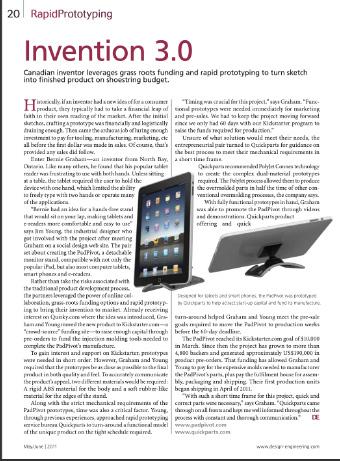
The 2000 and into the 2010s witnessed a growing emphasis on sustainability and eco-friendly design, influenced by global environmental concerns. Engineers began integrating life-cycle assessments and energy-efficient materials into their projects. In addition, the rise of embedded systems and microelectronics during this time allowed for the integration of smart technologies into everyday products, giving rise to the Internet of Things (IoT).
Collaboration also became more global and streamlined due to the rise of internet-based platforms and Product Lifecycle Management (PLM) systems. These tools allowed teams across the world to co-develop and manage complex projects efficiently.
In short, the 1990s and 2000s served to lay the foundation for modern design engineering through the fusion of digital technologies, sustainability and globalization, setting the stage for the intelligent, connected systems seen today, and the advances of tomorrow.|DE

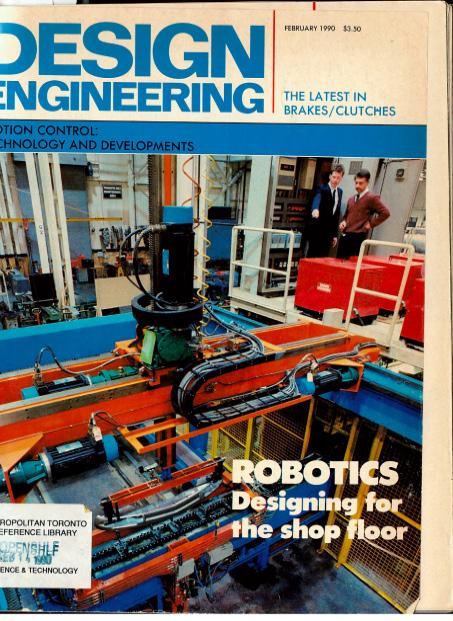
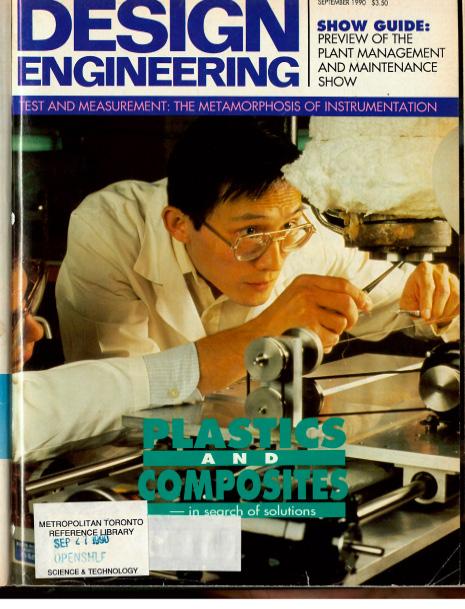

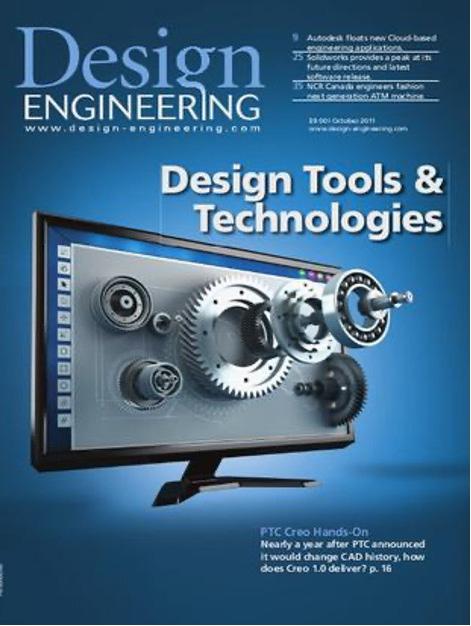
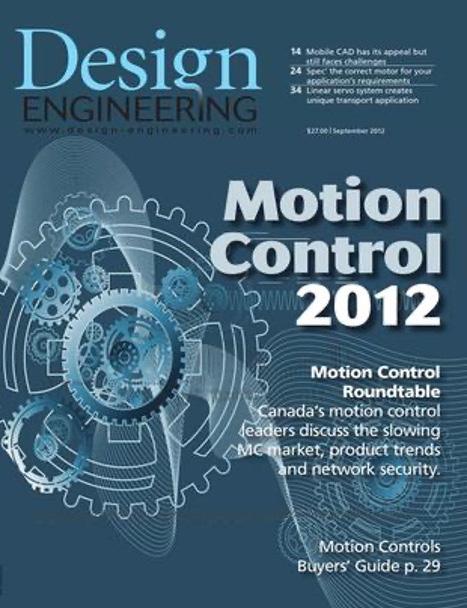
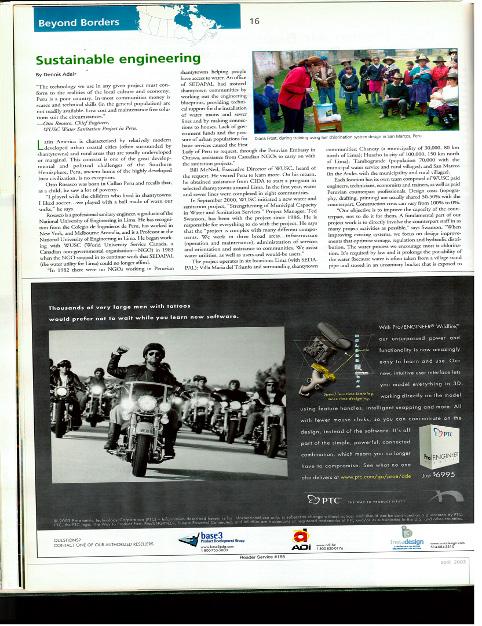

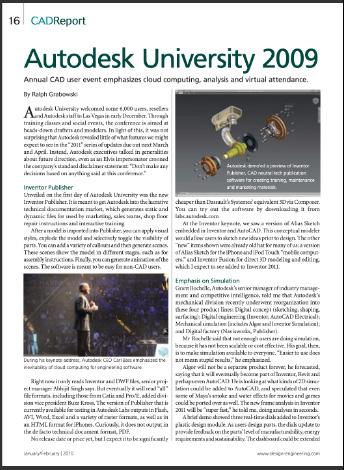

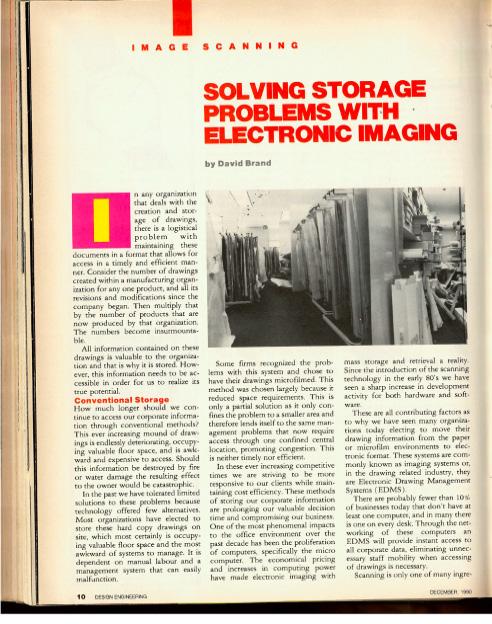

TWO DIRECTIONS IN MCAD
Examining two very different classes of CAD.
BY RALPH GRABOWSKI

This decade is witnessing two contrasting classes of CAD. One is based on the legacy code upon which we engineers place our trust for accuracy -- whether using AutoCAD or ViaCAD.
The other class of CAD software is always emerging - visionaries who spot a niche, get millions in funding, develop a new way to do CAD, and then hope someone buys them before the funding runs out. I recently counted three dozen newish CAD firms that I’d never heard of -- from Archonet to Vectary. Most run in Web browsers, and nearly all tout AI. Here I’d like to tell you about
ARES Mechanical starting with a tableau of sample files.
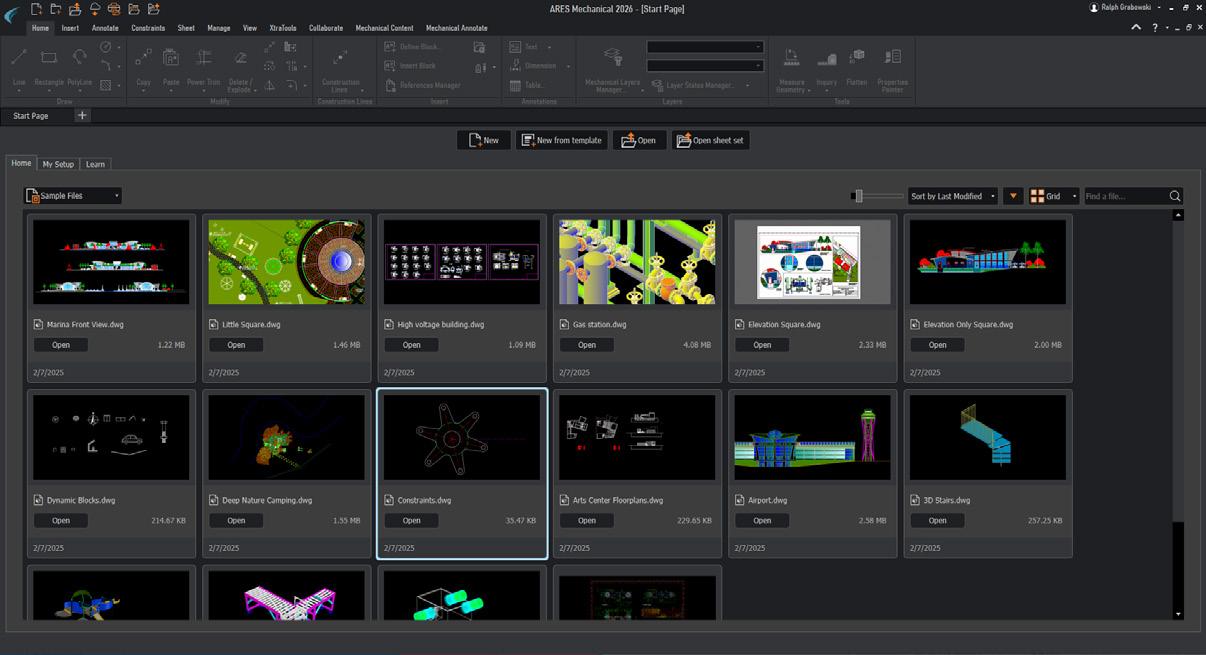
ARES Mechanical 2026 from Graebert
In 1983, Grabert GmbH became an Autodesk distributor for Germany. After its contract was taken away in 1994, the firm wrote a DWG editor to compete against AutoCAD. In
2005, it was rewritten with a new kernel and renamed ARES, after the Greek god of war. The company says its user base now is second only to AutoCAD’s. ARES runs on most operating systems: Android, iOS, Linux, MacOS, Windows, and Web
ARES Mechanical reporting the properties of a DIN part. The BOM is in the lower right corner.
Images courtesy of ARES.
browsers. The company also licenses it to other firms, such as PTC (used in Onshape) and Dassault Systemes (the basis of DraftSight).
In recent years, Graebert branched into verticals for 3D BIM/IFC files, ArcGIS maps, and 2D mechanical designs. (The verticals work on Windows only). When engineering firms move, say, from AutoCAD to NX or Catia, they still need to update and archive hundreds of millions of DWG files from the last 40 years. ARES Mechanical does this, but at a third of the cost of AutoCAD.
ARES Mechanical adds 2D mechanical functions to Graebert’s ARES DWG editor, handles AutoCAD Mechanical files up to v2022 (and up to v2023 within a few months) with full round-tripping, but does not do 3D modeling.
How Mechanical Differs from AutoCAD
I remember the first time I saw AutoCAD Mechanical. I was blown away by its automated design abilities and wondered out-loud why these functions weren’t in AutoCAD itself. (Autodesk no longer offers Mechanical separately; it is included with AutoCAD).
Drawings made with AutoCAD Mechanical are stored in DWG files but contain custom data for welding symbols and feature control frames. AutoCAD Mechanical attaches “part references” to objects - essentially attributes and balloon leaders attached to blocks, which generate bills of material effortlessly. Change a part, and the BOM updates automatically. (Because BOMs count parts, they are crucial for generating cost estimates and placing orders).
These features make it incompatible with other DWG editors, and so Open Design Alliance developed an API for firms like Graebert to read-edit-write the custom data. ARES Mechanical handles part references and BOMs in the same way as AutoCAD Mechanical.
A powerful function ARES offers is versioning, where it can record variations on designs, and then later merge the ones we want to keep. As well, ARES can compare differences
in two similar-looking drawings. We can coordinate with other designers through shared links and jump over to the Touch tablet and Kudo browser versions of ARES. It can also store drawings on cloud services, such as Dropbox and WebDAV.
ARES Mechanical includes parametric parts libraries based on American ANSI, British BSI, German DIN, international ISO and Japanese JIS
standards, as well as parts for architecture, civil and electrical drawings.
The AI in A3
These days, every CAD vendor needs to mention AI. For Graebert, it is A3 (ARES AI Assist). A3 gives industry-specific advice, shows users how to access commands and does calculations. A3 manipulates object selection through natural language input, such


Zoo Design Studio with 3D modeling commands in the toolbar along the top, the Variables panel on the left, and the split washer result in the center.
as “move the selected entities to layer doors.” At this stage, however, there is no AI-based design available.
ARES passes our queries to OpenAI for processing, which keeps them for OpenAI’s own training. Subscription users are limited to ten conversation threads a day, and permanent licenses users to two.
I tested A3 by asking, “Where is the attribute extraction command,” and it highlighted it in the ribbon. But when I asked it to “select all balloons” in the drawing, it couldn’t and suggested that I do it manually. Graebert tells me that support for Mechanical-specific objects will be added soon.
Pricing
ARES Mechanical is US$1,490 for a permanent license - something Autodesk itself has long proscribed - or else starts at $450 per year on subscription. You can run the software on

Zoo Design Studio with its Text-to-Part prompt at the top, the KCL code on the left, and the resulting part the center.
two computers at once. Download a 30-day trial from www.graebert.com/ cad-software/ares-mechanical.
Design Studio from Zoo Zoo began in 2021, with the name coming from the KittyCAD geometry and ML-ephant machine-language APIs. They are the foundation for Design Studio, launched earlier this year. The MCAD program is being
developed on Github and runs on Windows, MacOS, Linux and in Web browsers. The company has been financed through several rounds by investors, most recently for $5 million. By adding machine learning to a basic 3D mechanical CAD program, Design Studio lets us create and modify parts by typing descriptions like “16-tooth gear.” We might call that AI, but the company prefers to talk
Images courtesy of Zoo Design Studio.
instead about machine learning. It attempts to find appropriate formulas with which to draw parts.
The list of Design Studio commands is shorter than that of a 30-year-old program like Solidworks, but it has a powerful assistant in its Variables panel, which lists the parameters of objects as we create them. This is a straightforward way to modify every dimension of every part.
Another panel, named KCL, shows the KittyCAD programming code that generates the models. In fact, models are saved in ASCII-format .kcl files; we could make new 3D models just by writing KCL code. Other panels show the feature tree and linked files.
Testing machine learning
The halo function is Text-to-Part. It takes our written input and converts it to editable 3D parts. Early on, I found it slow and inaccurate. For instance, when I asked for a “universal joint for a 2-inch shaft,” it failed badly, return ing some rectangular blocks. When I asked for something simpler like a “1/2-inch lock washer,” it also failed, producing a washer sprouting blades. This one took about 40 seconds to generate; it might be faster to look up parts in a library.
Zoo told me updates would im prove things. So, when I asked for a “1/2-inch split washer,” it took just 20 seconds this time. However, instead of a helical split, it came up with an (incorrect) gap.
Once drawn, we can export parts in formats like STEP and STL. It imports the same formats, as well as Solidworks .sldprt files. I’ve suggest ed that DWG/DXF be added.
Design Studio is updated frequent ly, as new software programs need to be. It is free to use with 40 monthly credits for text-to-CAD operations, with one credit used for every minute of machine learning time. For more credits, monthly subscriptions start at US$99 per month.
With Design Studio, Zoo drags the future into the present. New CAD programs are taking advantage of the latest programming techniques to iterate rapidly.
From my experience with AI-enabled CAD programs, I’m asking, “Will AI like text-to-parts improve over time, or is it fundamentally flawed, unable to produce the human-level results we expect of CAD?”
In my opinion, I consider “AI” for the most part no more than a series of standard programming if-then statements.
ARES Mechanical is worthwhile checking out when you need an experienced CAD program to do general and mechanical drafting, while Design Studio is fun to play with, and to monitor as it develops better capabilities. |DE

Going forward
With ARES Mechanical, Graebert is preserving the past for today. Mature CAD programs remain compatible with legacy files, thanks to reverse-engineering by Open Design Alliance

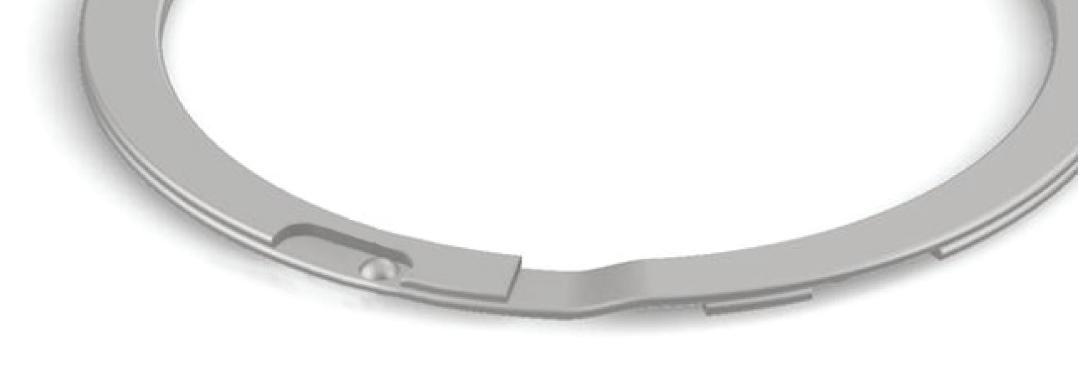
ENGINEERED TO MOVE
Inside the self-balancing intelligence of Human in Motion Robotics’ XoMotion exoskeleton. BY SEAN TARRY
During a moment in time when wearable robotics are rapidly evolving from science fiction to everyday reality, Human in Motion Robotics has engineered a leap forward that blends mechanical sophistication with human-centred design. Its breakthrough innovation - the XoMotion exoskeleton – promises to redefine mobility for individuals with lower-limb paralysis. However, at its core, the XoMotion isn’t simply a robot that helps someone walk. It’s an intelligent, responsive system that integrates biomechanics, advanced sensing, high-performance actuation and fast deterministic control loops to mimic the innate agility of real human movement.
Bridging the gap between human and machine
Siamak Arzanpour, Co-CEO and Co-Founder of Human in Motion Robotics, who has been instrumental in translating research at Simon Fraser University into a commercial device now poised for clinical deployment, began his journey in the multidisciplinary realm of mechatronics - a hybrid of mechanical, electrical and software engineering designed for the complexity of modern robotic systems. It’s this education that Arzanpour credits when talking about the inspiration behind the development of the company’s engineering philosophies that not only underpin the XoMotion, but offer a blueprint concerning the

Regulating balance in real time was one of the biggest challenges faced by the engineering team.
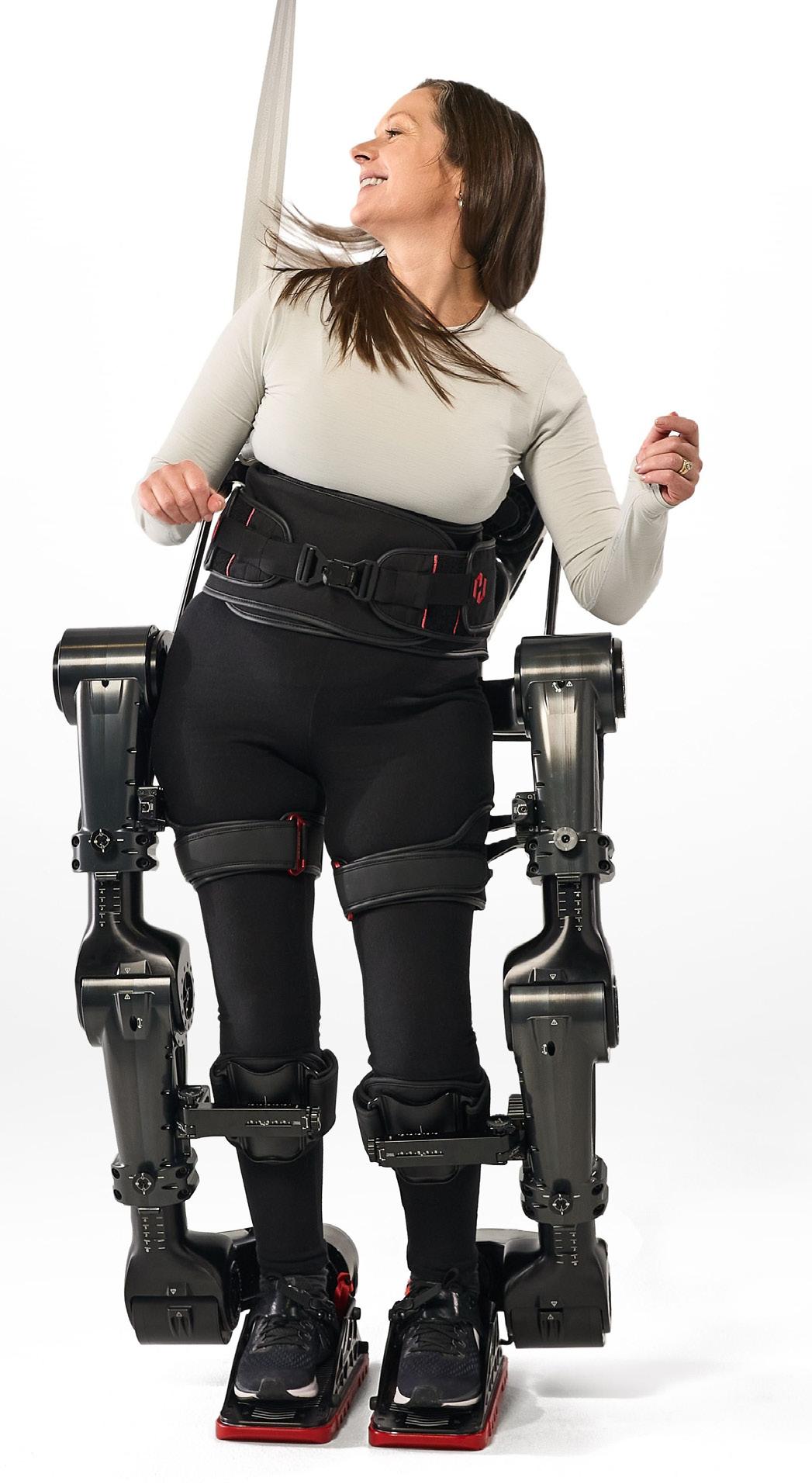
Chloe Angus enjoying XoMotion’s ‘Dance Mode’.
way modern exoskeletons should be built - not just to assist, but to intuitively move with their users.
“When we formed the company, we realized that our engineers were going to need to understand a bit of everything,” he explains. “We didn’t want to be limited by silos, especially when the task we were undergoing was replicating human motion.”
The idea to begin creating a self-balancing, full-mobility exoskeleton donned on Arzanpour in 2014 when he witnessed a live demonstration of an early exoskeleton in action while attending a trade show. He was impressed, but with some caveats.
“It was really exciting to see it in operation,” he says. “But it could only stand up and walk forward, with crutches for support. I could
immediately see the potential technology of that sort promised. But its limitations were clear.”
Shortly after returning to Vancouver, he and Co-Founder Edward Park assembled a team to pursue a radically different design. Their goal was to create full-body mobility with self-balancing autonomy - a system that could operate without crutches or any external support.
The challenge of balance
Setting the XoMotion apart from nearly every other exoskeleton on the market is its breakthrough self-balancing capability. It’s a technical achievement that required Arzanpour and his team to understand human balance and the equation that permits us to remain upright and apply that to advanced technology.
“To understand balance, you first have to understand the interplay between center of mass (CoM) and center of pressure (CoP),” Arzanpour explains. “As long as CoM remains over CoP, you’re stable. However, when we walk, we’re constantly going in and out of balance with the movement of our feet. We needed to understand how our brain essentially supplements for this constant change.”
Translating this into robotics meant incorporating an entire suite of embedded sensors within the footplates and across the body to track these variables in real time. These inputs feed a motion generation algorithm capable of adjusting CoM in anticipation of movement. The XoMotion doesn’t just react, it predicts motion trajectories based on user intent and environmental conditions.
However, building a robot capable of processing this data at human speed was a
unique and complex challenge. Achieving balance is not just a matter of solving mathematical equations. It’s fundamentally about timing. Every motion the exoskeleton makes must happen within a few milliseconds, or the illusion of natural movement breaks., and with it, stability.
Real-time control loops
The necessity of rapid decision-making drove the development of a tightly integrated control system with fast, low-latency sensor integration becoming essential in order to ensure that the device could sense changes immediately. To meet this need, the team developed deterministic control algorithms which guarantees the control system responds within a fixed, predictable timeframe - critical for avoiding delays that could lead to instability or user discomfort.
“We don’t think about how we walk. It just happens,” Arzanpour observes. “As a result, we knew the robot had to work the same way. To replicate this intuitive, subconscious reaction, we built it to close its control loop in milliseconds, not seconds.”
Arzanpour goes on to explain that this tight feedback architecture is especially critical when compensating for unexpected motion, such as shifts in the user’s upper body. Unlike humanoid robots, which operate within a fully controlled, predictable mechanical system, exoskeletons like XoMotion must manage the dynamic and often unpredictable behaviour of a real human user. In order to do this the device continuously processes inputs from the user’s body and adjusts in real time to maintain balance, prevent falls and ensure a smooth gait.
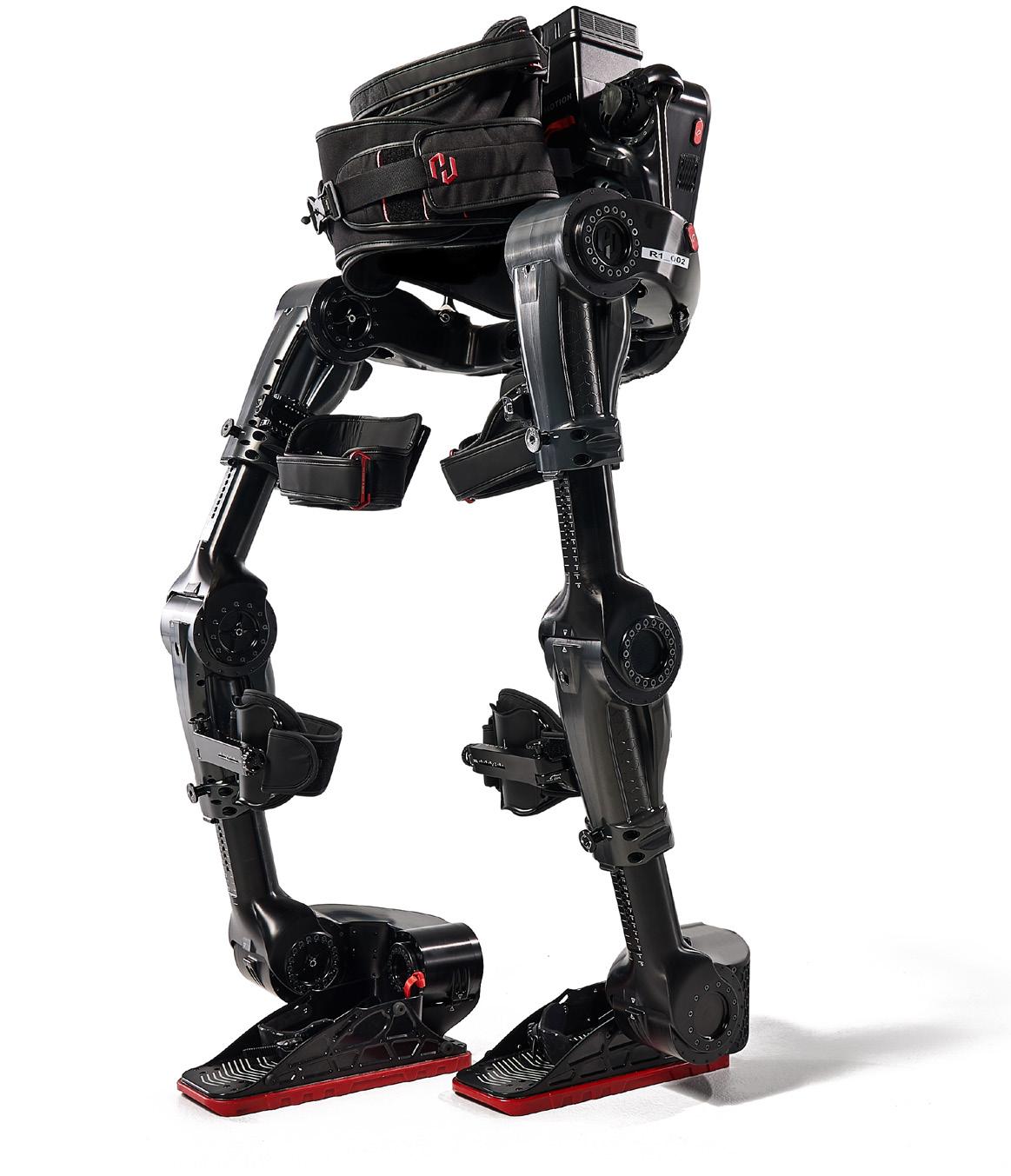
LP500 Latch Pins for Plastics
• Designed specifically for use in plastic hinge applications
• Lightweight, lead-free aluminum
• Barb secures pin in place

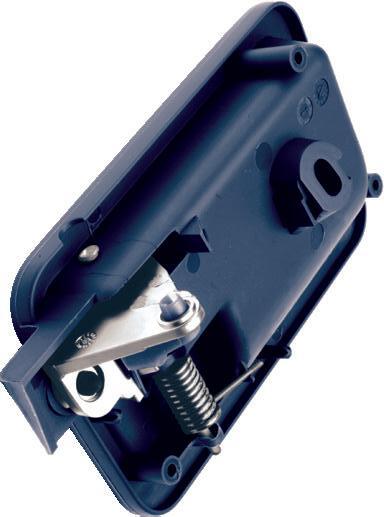
• Smooth body facilitates easy alignment through multiple holes
• Conducive for automatic feeding

Regulating
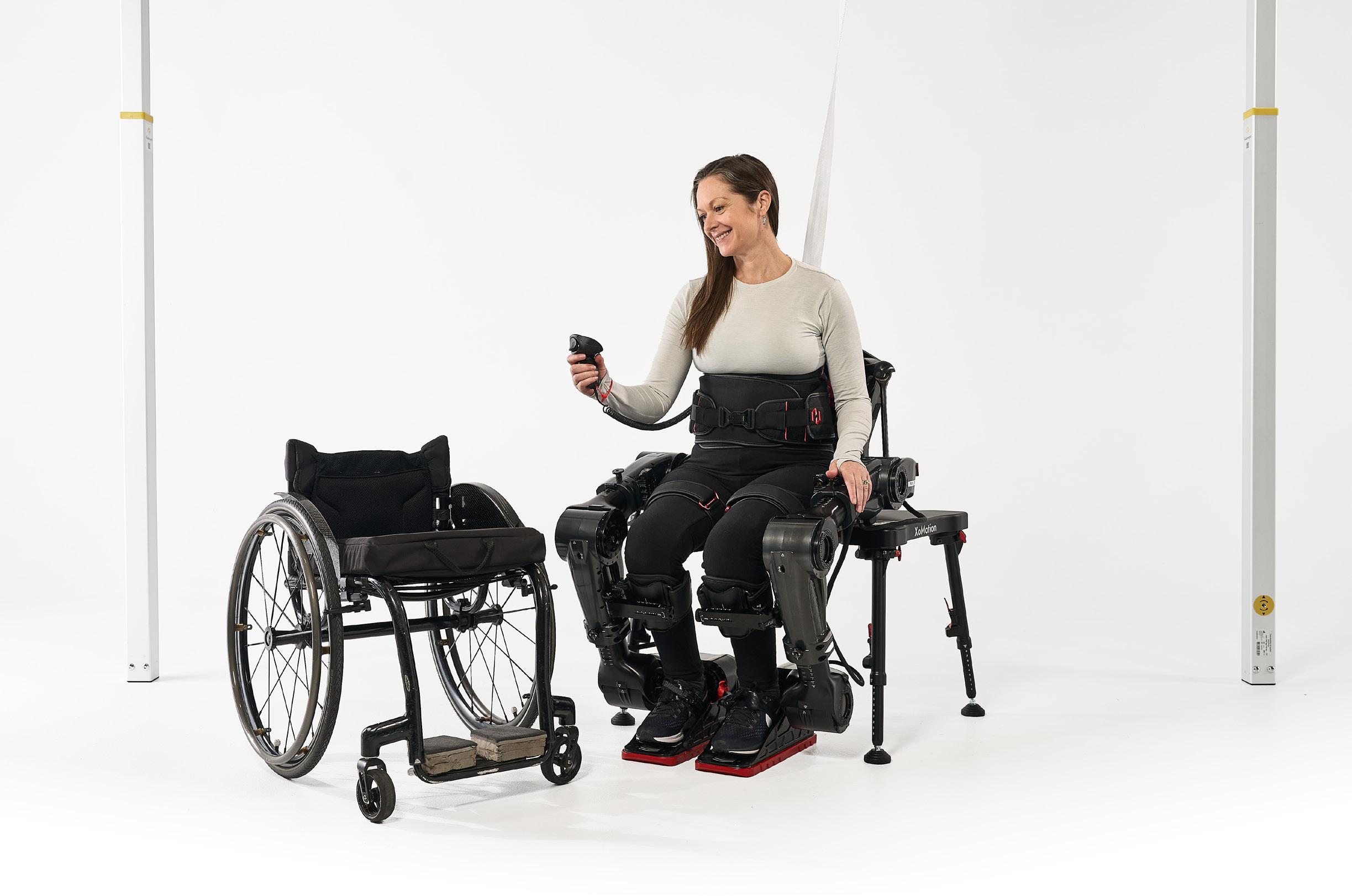
When off-the-shelf isn’t enough
One of the most impressive engineering hurdles involved in the development of the XoMotion was actuation. Arzanpour says that the team initially spent six to nine months searching for commercially available actuators that met their stringent requirements for weight, speed, torque and reliability. However, every off-the-shelf actuator they tested proved too heavy, too slow, or simply lacked the necessary torque-to-weight ratio for real-world use.
Realizing the fact that no existing solution was suitable, the team pivoted to in-house actuator development. And it’s a pivot that proved to be a game-changer. The result was the engineering of a proprietary actuation system that, despite being similar in size and weight to early prototypes, delivers four times the torque and speed. Combining high-torque motors with custom gearheads and integrated sensors in a compact housing, these custom actuators have been built specifically for the exoskeleton’s anthropomorphic structure.
Durability and low maintenance were also priorities when developing the
XoMotion’s actuators. Arzanpour describes them as “the heart of the system” that have been designed not only to deliver power but to last, too. And, in efforts to confirm the durability of the actuators, the team is continuously logging performance metrics to predict wear and replace parts proactively, ensuring the device remains reliable over long-term use.
Modularity, adjustability and the rehab environment
The XoMotion is currently targeted primarily at rehabilitation clinics, where safety, ease of use and adjustability are paramount. The exoskeleton’s modular design allows it to accommodate a wide range of users, specifically those between 140 and 190 centimeters in height and weighing up to 100 kilograms. Recognizing that time is a precious commodity in clinical settings, the team engineered internal adjustment mechanisms that enable clinicians to reconfigure the device between sessions quickly.
“The XoMotion can be adjusted for a new user in less than five minutes,” Arzanpour says. “This rapid reconfiguration
capability means clinicians don’t have to spend an excessive amount of time swapping parts between patients. This in itself is a significant improvement over earlier devices that required cumbersome manual adjustments that took a long time.”
In addition to modularity, explains Arzanpour, the device has been designed to be intuitive and straightforward for clinical use. The system’s ease of handling and quick adjustability reduce the clinician’s physical burden and learning curve, improving overall adoption and patient throughput.
Deterministic now, AI tomorrow
While the current rehabilitation model of XoMotion relies on deterministic control algorithms, which have been chosen for their reliability and simplification of safety validation needed for FDA approval, the Human in Motion Robotics team is already preparing for the next stage in exoskeleton evolution - the integration of artificial intelligence.
Arzanpour envisions a personal-use version of the device that incorporates AI-based control and environmental
Regulating balance in real time was one of the biggest challenges faced by the engineering team.
perception, stating that they’re similar in concept to self-driving cars. This future iteration will feature machine vision and AI inference to dynamically understand terrain, detect obstacles and climb stairs, all while adapting its gait accordingly. And, according to the Human in Motion Robotics Co-CEO, this is only the beginning.
“The AI components will go beyond obstacle detection,” says Arzanpour. “They will optimize energy efficiency, movement smoothness and torque allocation, which in turn will help reduce the size and weight of hardware components. This intelligent adaptation will enable the exoskeleton to respond more naturally and fluidly, creating an experience that approaches the responsiveness of the human body itself, which is our ultimate goal with this technology.”
Two brains, one machine
Designing an exoskeleton for human use is fundamentally different from building a humanoid robot, Arzanpour notes. While humanoid robots operate in fully controlled and predictable environments,
exoskeletons must coexist with the unpredictable dynamics of their human users. As a result, a number of special considerations needed to be made.
“The robot and the human user are effectively two brains working together,” he says. “The exoskeleton must constantly infer the user’s intent without controlling their upper body. For example, if the user leans or shifts unexpectedly, the system must respond immediately to maintain balance and safety without overriding the user’s natural motion.”
He goes on to explain that this requires a sophisticated interplay of biomechanical safety measures, FDA-certifiable materials - down to the adhesives - and fault-tolerant behaviours. As a result, the XoMotion is as much a marvel of human factors engineering as it is of robotics.
Lived experience
When Chloë Angus first stood up in the XoMotion, it wasn’t in a lab or on a stage. It was a deeply personal milestone - the kind that redefines what’s possible after a life-changing injury. For Angus, who
became paralyzed from the waist down a decade ago, it was also a vindication of years of vision, advocacy and collaboration with a team of engineers who shared her belief in changing the status quo of mobility technology.
“Ten years ago, I laid in a hospital bed wishing for something like XoMotion,” she says. “To now see it not only developed, but being used by others - it’s everything I hoped for and more.”
The future of mobility
What further differentiates XoMotion from previous exoskeleton generations is more than just the sum of its motors and microcontrollers. It’s a complete rethinking of how humans and machines move together - and how technology can restore not only function, but freedom.
“We’re not just talking about mobility,” says Angus. “We’re talking about independence, about empowerment, about joy.”
Built on Lived Experience
Angus serves as Human in Motion Robotics’ Director of Lived Experience - a

25_007029_Design_Engineering_SEP_CN Mod: June 18, 2025 4:09 PM Print: 07/23/25 page 1 v2.5


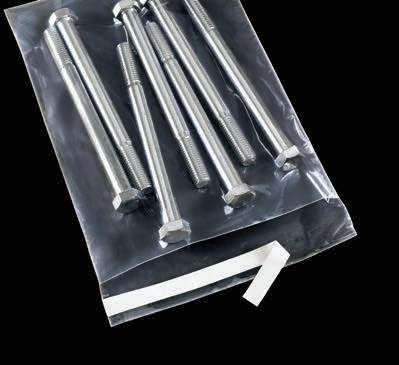
ORDER BY 6 PM FOR SAME DAY SHIPPING
ENGINEERING SPECS AT A GLANCE
Custom-built for self-balancing long life, the XoMotion is proving to be an optimized wonder among exoskeletons.
• User Height Range: 140–190 cm
• Max User Weight: 100 kg
• Actuator Design: In-house; high-torque, compact, 4x performance over initial prototypes
• Control System: Deterministic feedback loop (<5 ms cycle time)
• Sensors: Pressure, position, IMU; embedded throughout limbs and feet
• Balance Model: Center of Mass vs. Center of Pressure; push-recovery and gait-prediction enabled
• Clinical Status: Entering trials for FDA approval in the U.S.
role that isn’t ceremonial, but foundational. Having used earlier exoskeletons herself, she recognized their lack of balance, dependence on crutches, awkward gait, high clinician burden and inability to offer truly independent use.
“In the past, the technology was exciting,” she says. “But it just didn’t meet the needs of the user. I’ve seen and used devices that required multiple attendants to help or left people reliant on walkers. That’s not freedom.”
Her feedback, starting at the earliest stages of development, helped ensure the design of XoMotion went far beyond technical achievement. It had to match real-world expectations like maneuvering around tight spaces or standing up to greet someone.
“Unless you’ve spent a year or a decade in a wheelchair, it’s hard to fully grasp what the barriers are, including physical, emotional and social,” she says. “But that’s the lens I brought to this team.”
Natural movement, reimagined
And it’s a lens that has helped to shape everything, from mechanical design to software user experience. What’s more, XoMotion is constantly evolving, adding capabilities and ‘modes’ to its impressive list of commands. It’s a system that provides the user with an incredible range of customization, says Angus, adding further to the sense of freedom that the device offers.
“The closest analogy that I can think of is like giving someone an iPhone,” she says. “It starts as a platform, and then you can customize
it by adding the ‘apps’ you need for your life. XoMotion is similar. The team’s been amazing at considering just about everything possible for the end-user.”
Technology with a soul
While XoMotion’s technical achievements are remarkable, its emotional impact may be even more profound. The device is currently being used at Synaptic Neuro Rehabilitation Centre in Calgary, Alberta where it’s being integrated into intensive neuro-rehab protocols. Angus recalls its debut moment in the clinic being deeply emotional.
“There wasn’t a dry eye in the room when Ryan Straschnitzki, one of the Humboldt Broncos hockey players who was injured in the 2018 bus crash, stood up and started practicing hockey skills in the exoskeleton,” she says. “It’s a moment that reconfirmed all over again the reasons we set out to develop the XoMotion and the incredible possibilities it presents to those with mobility challenges.”
In fact, Angus also recalls the moment she was able to stand up and hug her husband to her chest for the first time since her injury.
“It still makes me choke up,” she says. “You don’t realize how much you miss the little things like standing eye-to-eye with someone and hugging them without a wheelchair between you.”
Another moment arrived when the Human in Motion Robotics engineering team surprised Angus with an XoMotion feature they called ‘Dance Mode.’ Knowing how much she missed dancing, they programmed the system to respond to her body’s natural movement
without a controller.
“At first, I thought the system had failed,” she says. “It dropped down quickly when I leaned forward, but then it moved with me, flowing with my rhythm. I immediately told the team that we had developed the coolest exoskeleton in the world. Come on. It has dance mode.”
Not just a device - a movement
From Angus’ perspective, the future of wearable robotics is not just about assisting people with injuries. It’s about preparing them for the inevitabilities of life. Human in Motion Robotics’ vision is to make wearable robotics as essential, and as common, as smartphones. From industrial exosuits that protect factory workers to assistive devices that enable independent aging, the applications are vast. And the need, according to Angus, is urgent.
“Everyone is going to experience a motion disability at some point,” she asserts. “Whether it’s due to injury, illness or aging, we’re all going to experience the same challenges at some stage. And none of us want a walker or a wheelchair.”
Still, barriers remain - especially in Canada, where Angus says the med-tech investment ecosystem is cautious. Financing, she says, has been the biggest challenge. But the company has persevered because, as Angus explains, everyone involved knew that it was what the world needed.
“That’s our legacy. We built a device that doesn’t just help people stand up and walk. We built a device that helps to restore an individual’s freedom. That’s worth everything. |DE

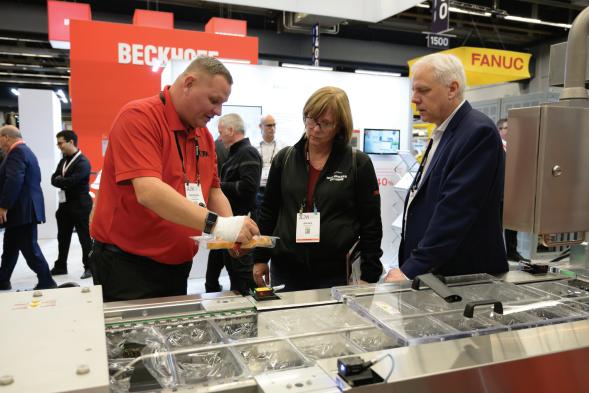
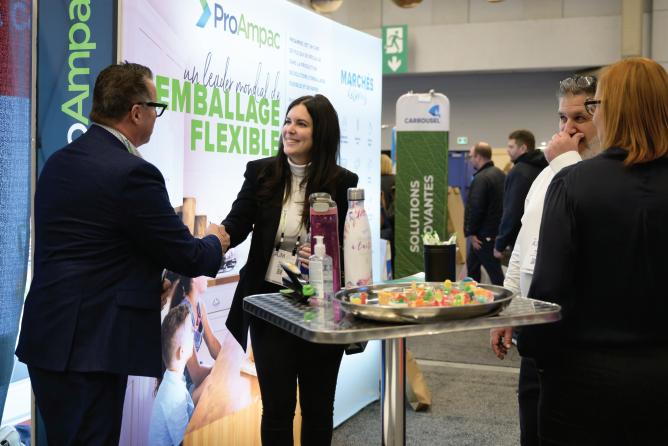
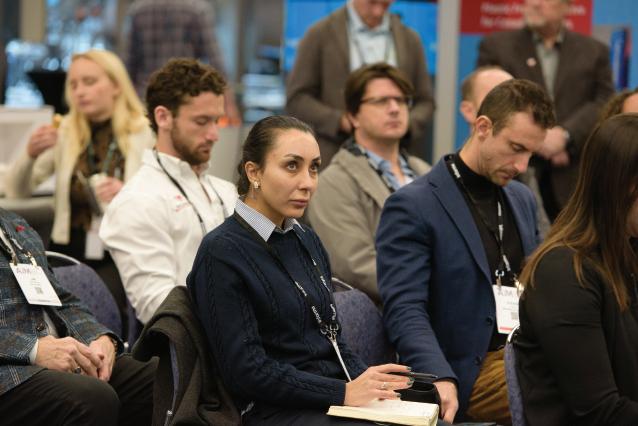

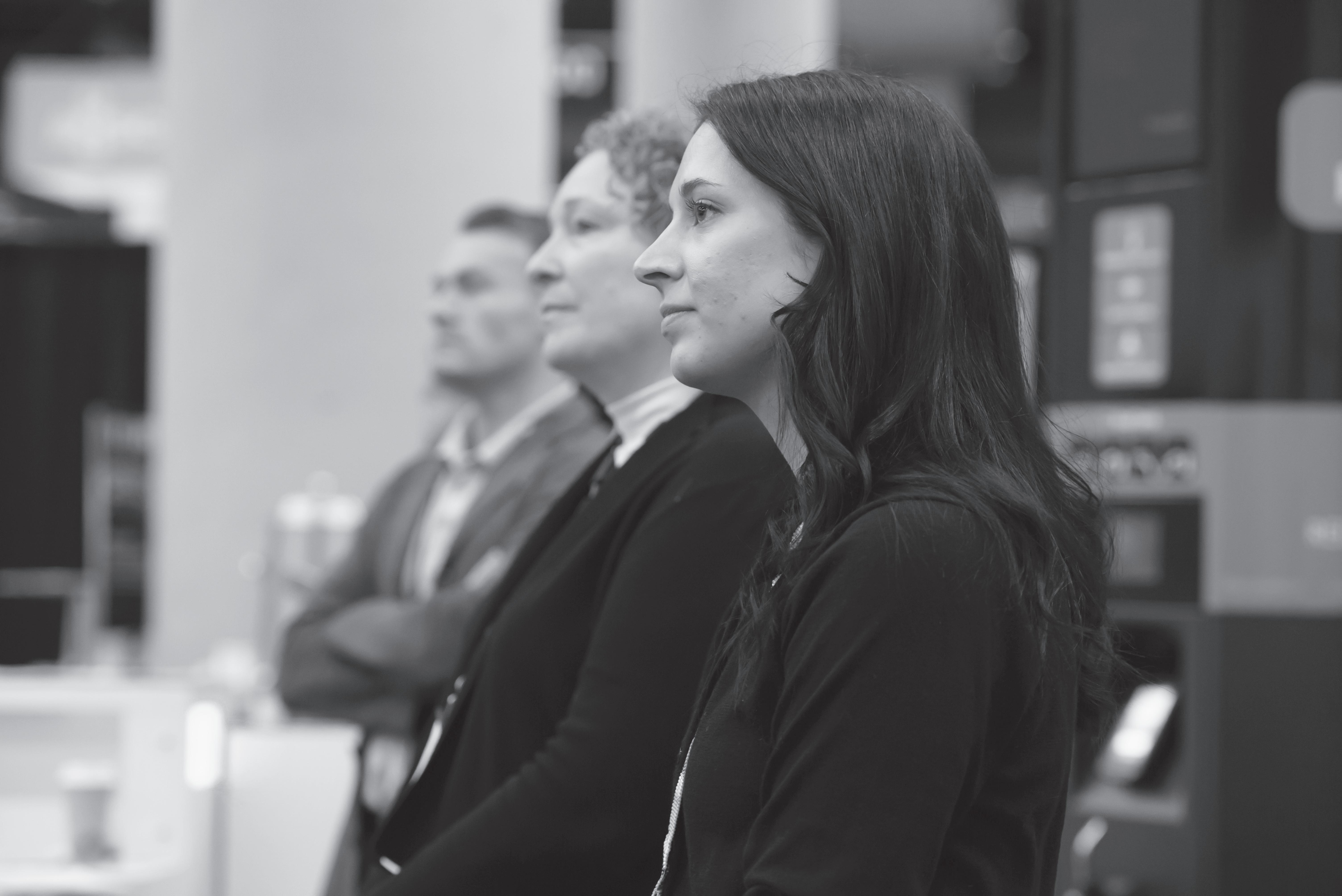
STERLING INDUSTRIES: UNLOCKING CANADA’S MEDTECH POTENTIAL
Inside the philosophy and engineering culture of one of the country’s leading medical device manufacturers.
BY SEAN TARRY
Canada’s medical technology sector is currently at a crossroads. From one perspective, the country boasts an impressive legacy of world-class research institutions and a vibrant pool of talent.Through another lens, though, the journey from innovation to commercial success remains riddled with unique systemic and operational barriers. As global healthcare demands continue to grow increasingly complex, Canadian MedTech companies face the critical challenge of scaling innovative medical devices while navigating a fragmented healthcare system, evolving regulatory frameworks and limited access to capital and talent.
One company that seems to have figured these complexities out is homegrown Canadian MedTech leader Sterling Industries. It operates locations in Kalamazoo, Michigan, Concord and Barrie, Ontario and is headquartered in Woodbridge, Ontario. And with over four decades of experience in precision manufacturing, the company has established itself as a trusted partner for OEMs and MedTech innovators across North America. Specializing in the production and assembly of complex components and finished devices, Sterling
delivers scalable solutions for regulated industries including medical, life sciences and advanced industrial markets. From early-stage prototyping to full-scale production, the company offers vertically integrated services - from design for manufacturability and sourcing to machining, assembly, testing and logistics.
However, what sets the company apart is its commitment to collaboration and operational agility. The company doesn’t just manufacture components - it helps bring ideas to life through a strategic, customer-centric approach. Whether supporting a startup with rapid iterations or enabling a multinational OEM to scale production efficiently, Sterling adapts its capabilities to meet diverse needs without compromising on quality or speed. With in-house engineering, automated production lines and a data-driven quality management system, Sterling helps reduce time-to-market and mitigate risk for its clients.
As a result, Sterling serves as a beacon of sorts on the oft-clouded Canadian MedTech landscape, signalling a way forward for other Canadian MedTech companies attempting to find success and growth among the complexities of the industry.

So, to better understand all the dynamics at play and explore how Canadian companies can unlock their full potential and accelerate their strategic and technical efforts in order to drive innovation, we spoke with Sterling Industries’ CEO, David Van Slingerland, about some of the broader challenges the sector must overcome.
Promise and pitfalls
Despite Canada’s strong foundation and storied history in medical innovation, which the MedTech CEO acknowledges, he suggests that one of the core issues impacting the industry is the way in which Canada’s publicly funded healthcare system is structured. Unlike in the United States, where healthcare is largely privatized, and cost-benefit analyses can support the adoption of new, higher-priced devices that reduce overall patient costs, Canada’s budget allocations are highly siloed. As a result, explains Van Slingerland, innovation can be stifled.
“We have incredible research talent across the country and a history of introducing breakthrough ideas,” he says. “But translating those ideas into market-ready

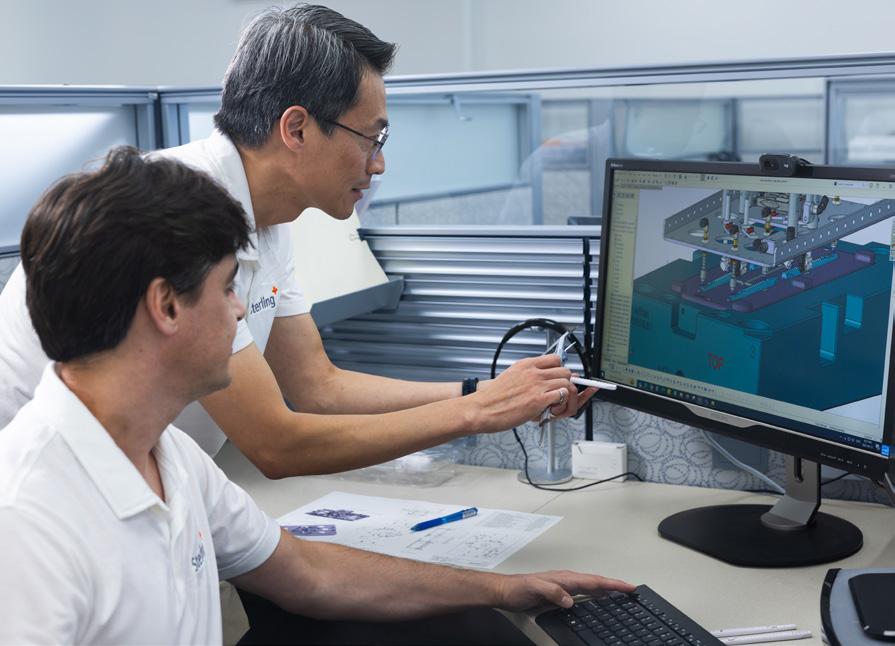
Sterling Industries has developed an engineering culture that ensures operational excellence.
products that actually improve patient care is a different story. In Canada, operating room budgets are separate from budgets for hospital stays or infection management. So, if a device is expensive in the operating room but leads to fewer infections or shorter hospitalizations, the operating room decision-makers may still reject it because they don’t control the savings downstream.”
He goes on to explain that most medical device companies rely heavily on reimbursement pathways to recoup investments. The lack of clear billing codes in Canada, he says, and the complexity of regulatory approval processes, contribute to extended timelines and heightened risks. What’s more, Canada’s capacity for clinical trials and diagnostic validation is limited, which, explains Van Slingerland, places even more strain on those operating within the industry.
“Rigourous clinical studies are necessary for regulatory approval,” he recognizes. “But they are expensive and require specialized infrastructure and expertise. That puts a lot of pressure on startups and smaller companies who are already facing an incredible number of challenges.”
This budget fragmentation, he explains, discourages the adoption of advanced technologies that could improve outcomes and reduce total healthcare costs. As a result, promising devices and innovations developed in Canada often gain traction in the U.S. private market before they even make headway at home. It’s an outcome that can be incredibly frustrating for Canadian companies, he says, but one that’s also an economic reality.
Reimbursement and regulation complexities
Van Slingerland goes on to explain that reimbursement and regulatory challenges also serve as bottlenecks that stall and impede medical device innovation in the country.
“Many innovations don’t have an existing billing code, so hospitals and providers have no clear way to pay for them,” he says. “Without reimbursement, commercialization stalls and both short- and long-term innovation suffers.”
He points to recent efforts to harmonize regulatory standards globally as a positive step. Canada’s adoption of the Medical Device Single Audit Program (MDSAP) and alignment with ISO standards help streamline market access internationally. However, developing an intimate understanding of and working within diverse frameworks, including the FDA’s evolving requirements in the U.S. and the European Union’s stricter Medical Device Regulation (MDR), remains a challenge.
The rise of integrated MedTech ecosystems
Despite these challenges, Van Slingerland stresses the fact that there are currently just as many opportunities for those operating within the MedTech industry. And, he says, much of the opportunity is being driven by advanced technologies and the wherewithal of companies to leverage their capabilities to the fullest.
While the development and use of traditional medical devices remains crucial, Sterling’s CEO believes that the future of MedTech lies in integrated, connected systems. Devices that seamlessly exchange data with electronic medical records (EMRs), like surgical devices which

automatically upload clinical notes and images during procedures, are presenting massive potential. In fact, according to Van Slingerland, they offer transformative capabilities to improve clinical workflows and patient care.
“This kind of connectivity doesn’t just enhance device function - it transforms the entire care pathway,” he asserts. “Doctors used to dictate into tape recorders or do voice-to-text after their shifts. Now, with real-time voice integration, documentation is finished the moment the procedure ends. That’s a game-changer for productivity, enhancing accuracy and reducing errors.”
Home healthcare and combo devices
Van Slingerland also highlights the growing demand for home healthcare devices. Driven by Canada’s aging population and a desire to reduce hospital visits, it’s another area of innovation that the Canadian MedTech leader believes is rife with opportunity.
“There’s huge interest in ‘combo devices’ that merge drug delivery with medical devices, allowing patients to administer precise doses at home safely,” he explains. “Pharma companies are investing heavily in this space, and it’s a tremendous opportunity for MedTech innovation. By developing user-friendly, accurate devices for unsupervised home use, companies can tap into a growing market while improving patient independence and outcomes.”
Manufacturing as a strategic advantage
One of the ways in which Sterling Industries has set itself apart from most of its competitors within the industry, explains Van Slingerland, is its commitment to inhouse manufacturing, serving as a critical part of the company’s strategy to ensure agility and quality control. Over the past five years, Sterling Industries has built injection molding facilities and acquired laser fabrication equipment, producing about 70 per cent of device components internally.
“Vertical integration shortens time to market and gives us greater control over materials and biocompatibility,” he says. “These outcomes are crucial for the development of invasive devices and allow us the greatest possible level of control over our processes and production.”
In addition, the company invests in clean rooms for sterile product manufacturing, further ensuring compliance with regulatory standards. And advances in 3D printing, especially using metal additives, have also allowed rapid prototyping and quick design iterations. Although not yet scalable for mass production, these capabilities enable Sterling to test and refine designs efficiently, helping to introduce cutting-edge innovations within shorter timeframes.
Accelerating innovation with advanced tools and collaboration
Another way by which Sterling Industries separates itself from other companies
working within the Canadian MedTech industry is the culture of engineering that it’s built which influences the practices it employs, powering the company’s accelerated development cycles. Leading the way is Sterling Industries’ Senior Engineer andTeam Lead, Project Manager, Sanjesh Yasotharan, who understands just how important his team’s work is and the critical nature of the devices and components that they design and manufacture.
“Medical device development is a significantly important, high-compliance environment,” he says. “We need to deliver innovative solutions rapidly but with zero compromise on safety and reliability. As a result, it’s our responsibility to not only ensure that our processes are maintained, but to also make sure that we’re considering everything at our disposal in order to enhance and improve our practices. For instance, we’ve been leveraging artificial intelligence to automate repetitive tasks such as documentation and data transfer. Our goal with this is to free engineers from administrative burdens so they can focus on creative problem-solving.”
Yasotharan points out that Sterling’s engineering teams also extensively use simulation tools like mold flow analysis, finite element analysis (FEA) and computational fluid dynamics (CFD) to validate designs early, minimizing costly late-stage changes.
“We want to get the design right the first time,” he stresses. “This upfront rigour reduces risks and shortens time-to-market.”
Design for manufacturability
Another hallmark of Sterling’s success is its commitment to design-for-manufacturability concerning every project it embarks on, considering it from the earliest stages possible. Yasotharan contrasts this approach with his earlier industry experiences where manufacturing was often an afterthought, which inevitably caused delays.
“Right from the start, we discuss how the part will be made, feasible tolerances, draft angles and parting lines,” he explains. “Because we produce everything ourselves, building it right the first time is critical. This early alignment between design and manufacturing not only helps avoid costly redesigns, but it also helps to build and maintain customer confidence in our delivery timelines and the quality of the product.”
Inside the Sterling Industries facility in Woodbridge, Ontario.
Supporting early-stage startups through close collaboration
Yasotharan also highlights Sterling’s riskbased approach, collaboratively setting inspection criteria and process controls with clients to ensure smooth transitions from prototype to production. Early-stage startups often come with tight budgets and evolving product definitions, he explains. Sterling’s collaborative culture helps bridge these gaps.
“What’s challenging is extracting the ‘tribal knowledge’ clients hold about their own technology,” He notes. “To facilitate this, we visit their facilities, review prototypes and watch operators to understand nuances that may not be documented. This iterative, open process builds trust and allows us to tailor manufacturing solutions for small production runs, a growing need among many companies operating within the MedTech sector.”
Ensuring reliability – nonnegotiable
It may very well be understood without mentioning, saysYasotharan, but reliability is paramount in devices used in surgical and diagnostic contexts. In fact, he points out that failure rates must be well below one per cent in order to be deemed accurate and functional within the MedTech industry. It’s a challenge that Sterling’s engineering team lead recognizes, stating that it’s the reason for their unwavering commitment to testing and verification, especially early on in the process.
“You can’t test tens of thousands of pieces before launch,” he says. “Simulation tools and risk analysis like failure modes and effects analysis help us predict and design out failure points early. It’s an approach that ensures that our products meet ISO standards and function flawlessly when patient safety is on the line. You need to think like the user and anticipate every possible misuse or failure. It requires a mindset shift for some in order to begin using risk management tools as ways to improve the product, not just to fulfill paperwork requirements.”
A vision for Canada’s MedTech future
The convergence of Sterling Industries’ leadership and culture of engineering has to this point resulted in nothing less than an example for other companies working within the Canadian MedTech industry
to look to as a blueprint of sorts – one that seems to guide a path forward, promising the unlocking of potential.
As Van Slingerland points out, the industry in Canada possesses the ideas, talent and capabilities to be a global leader in the development and manufacturing of medical devices. However, in order to realize those capabilities, he suggests that enhanced strategic investment in manufacturing, the embracing of digital
integration and the fostering of a collaborative ecosystem are all necessary.
“The opportunity is clear. With the right kind of investments, combined with the proper nurturing of resources, we can create an environment in Canada where innovative medical devices not only get developed but thrive commercially. And, in the end, the greatest benefit of this result is in better patient care and a strengthened Canadian MedTech industry.”|DE
Rolling Ring LINEAR DRIVES
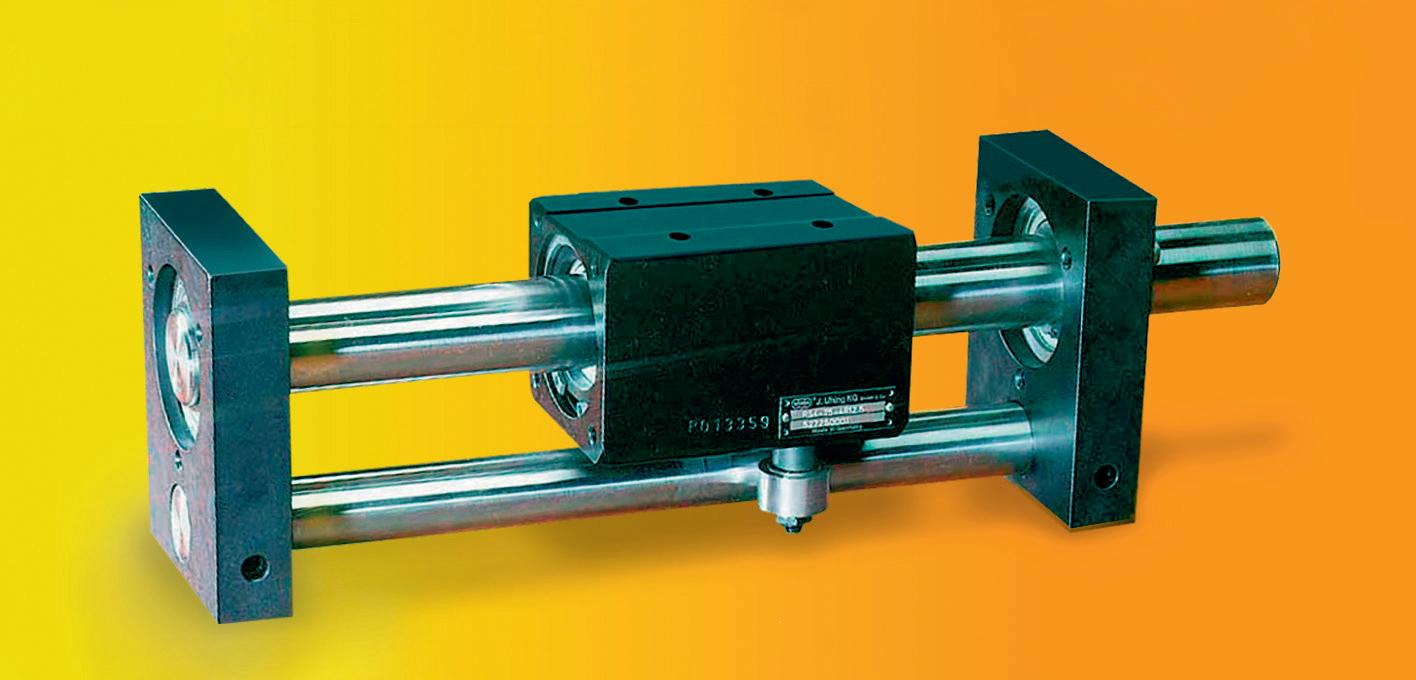


Canadian MedTech innovation, compliance and collaboration
Navigating design challenges in Canada’s complex
MedTech industry. SEAN TARRY
The Canadian MedTech sector occupies a unique position at the intersection of strict regulation, technical innovation and global health impact. For design engineers tasked with developing medical devices in this space, the job is anything but routine. It demands not only technical prowess but also an ability to navigate shifting supply chains, evolving compliance standards, as well as the growing role of AI and connectivity. According to Christian McMechan, Principal Electronics Engineer at StarFish Medical, engineering in this field is an exercise in innovation under pressure.
Supply chain stresses
With 14 years of experience and a strong background in both electrical engineering and medical compliance, McMechan understands the challenges faced by design engineers when developing medical devices in Canada. And, in his estimation, one of the most difficult hurdles to overcome today is one that’s shared by engineers just about everywhere.
“The biggest technical challenge isn’t necessarily unique to Canada,” he explains. “Supply chain instability is huge, especially when your device relies on components originally developed for fast-moving consumer electronics.”
Consumer components like processors, sensors and displays drive much of the technological advancement in wearables and mobile devices. However, these parts often have short life cycles - replaced by newer, faster, smaller iterations every 12 to 18 months.
“That’s great for smartphones,” says McMechan, “but a nightmare for medical devices, which often need to be supported, manufactured and maintained for five to ten years. If a

Concept
sketch of the arc device – a non-invasive medicasl device.
major component becomes obsolete, you’re suddenly facing requalification, re-certification and possible design overhaul.”
Future-proofing devices
Adding another layer to these challenges, says James Henderson, Senior Mechanical Engineer at Design 1st, is the complexity of mechanical design constraints under regulatory pressures.
“Medical devices aren’t just mechanical puzzles; they have to be biocompatible, sterilizable and designed for repeatable manufacturing,” he points out. “Every material choice and assembly process must be validated, which limits your options but also ensures patient safety.”
Beyond the challenges associated with hardware, McMechan notes that regulatory burdens have evolved to reflect modern connectivity and cybersecurity concerns, particularly when it comes to electromagnetic compatibility.
“There’s greater emphasis today toward future-proofing the devices that are being designed and manufactured,”
he says. “Regulators are pushing manufacturers to conduct risk analyses that consider emerging emitters like 5G and new frequency bands. The burden’s now on the manufacturer to prove their device will be immune - or at least safe - in tomorrow’s environment.”
Designing for adaptability
Henderson echoes McMechan’s concern about future-proofing, emphasizing the importance of designing with adaptability in mind.
“When you design a device today, you need to anticipate the technology landscape three to five years out,” he says. “This means modular designs, upgradable firmware, and even considering how AI integration might evolve in the device’s lifecycle.”
Ensuring cybersecurity is no longer optional, either, explains McMechan. Devices are expected to connect to hospital networks, smartphones and cloud platforms. However, this expectation brings with it increased risk for manufacturers.
“We’re now needing to deal with
authentication protocols, encrypted data transmission, software versioning and endpoint security,” he says. “The design isn’t just about hardware anymore. It’s about designing trust.”
Henderson adds that this shift even influences mechanical design elements.
“Physical security - like tamper-proof enclosures and secure ports - has become just as critical as software defences. If a device is physically compromised, no amount of encryption can save patient data.”
Regulatory landscape
When it comes to the regulatory level, Gerry Frenette, Vice President of Public and Member Relations at MedTech Canada, offers critical insights into how the regulatory environment shapes product development timelines, especially for small- to mid-sized organizations.
“One of the most significant regulatory hurdles has been the transition to the Medical Device Single Audit Program (MDSAP),” Frenette explains.
“Canada was the first jurisdiction to implement MDSAP, which has posed challenges but ultimately offers significant benefits, particularly in enabling single audits to cover multiple regulatory jurisdictions.”
Frenette goes on to highlight how this international audit harmonization not only simplifies compliance but also increases access to Canadian markets for Class II-IV devices.
“The work that we conduct at MedTech Canada involves educating members on the program and advocating for further adoption globally,” he says. “This reduces duplication and streamlines product commercialization.”
Advocacy and support
With respect to the maintenance of regulations, including the development of or revising of existing ones, in collaboration with Health Canada and other bodies, MedTech Canada facilitates regular bilateral meetings, conferences and consultations to ensure ongoing dialogue. It’s an important
role to play says Frenette, advocating for the ongoing success and viability of Canadian MedTech companies while also guaranteeing patient health and safety.
“These forums allow both industry and regulators to address concerns and identify areas for alignment,” he explains. “Over the past three years, we’ve seen progress in reducing regulatory burdens while maintaining safe and effective devices in Canada.”
Proactive engagement
With these challenges in mind, Frenette emphasizes the importance of proactive regulatory engagement for OEMs and machine builders, especially amid evolving standards and supply chain pressures. He advises early and ongoing interaction with Health Canada in order to help clarify requirements, reduce risks and minimize costly surprises during development. In addition, he also recommends leveraging external resources such as regulatory consultants, industry


associations and government guidance programs as a means to remain current and compliant.
He goes on to explain that accelerated pathways like MDSAP and international recognition pilots are also important strategies that can be used to reduce certification burdens and speed time-to-market. In fact, Frenette suggests that organizations should aim to communicate and engage with as many points of reference as possible to ensure they are keeping up with the demands of medical device regulations.
“We also encourage collaborative development models - partnering with academic institutions or contract research organizations - to share compliance costs and foster innovation,” he says. “And participating in consultations and advocacy activities keeps industry perspectives front and centre in regulatory updates. This collaborative approach benefits the whole ecosystem.”
Embedding compliance and innovation
Design constraints in the Canadian MedTech space reflect global realities, explains McMechan, noting that compliance isn’t just a paper exercise - it’s deeply embedded in every design decision, especially when regulatory bodies like the FDA, Health Canada, or the EU’s MDR are involved. Every decision must be validated, he says,
documented and often simulated before any hardware is tested. As a result, budgets can sometimes grow unmanageable.
“Cost is always a major constraint,” he admits. “The level of documentation and design rigour needed in medical device development means timelines and budgets are never light.”
Despite these challenges, however, McMechan still finds room for innovation - particularly in how regulatory awareness can help shape better designs from the start.
“When I was a junior engineer, I didn’t know what I didn’t know,” he says. “And in some ways, that helped me create unconventional solutions to common problems. Now, I can embed safety principles, compliance factors and usability concerns into the earliest phases of design. That saves time and cuts down on rework.”
Interdisciplinary collaboration
It’s a sentiment that’s shared by Henderson. He recognizes the unique complexities involved in the development of medical devices from design to manufacturing, believing that adherent practices and procedures should not only be part of a company’s approach, but it should also be engrained in just about everything that it does. And he also suggests that interdisciplinary collaboration can be critical in determining the success of any given device.
“The regulatory landscape is
complex and ever-changing,” he asserts. “You can’t treat compliance as a checklist at the end. It has to be baked into your design workflow from day one. And a strong interdisciplinary approach definitely helps. Engineers need to collaborate closely with clinicians, human factors specialists and regulatory experts to ensure that the device they’re developing is safe, effective and user-friendly.”
Communication is key
Communication is also a central pillar of successful MedTech development, says McMechan, especially in a consultancy environment like StarFish Medical, where teams regularly engage with clients, clinicians and regulatory experts in the design to manufacturing journey.
“It’s one of the most interesting parts of the job,” he says. “Every project is different, and every stakeholder has a different level of technical fluency. Sometimes the client leans entirely on us for technical direction. Other times, they have their own engineering team, and we need to prove our competence quickly to build trust. Either way, the collaboration hinges on clear, respectful communication.”
In most instances, this communication and consultation, says Henderson, often requires engineers to become experts in the client’s core domain - be it a diagnostic system, a surgical tool or a wearable therapeutic. And then, he explains, they have to disseminate the information and knowledge they’ve gained in a number of different ways in order to achieve success.
“You have to be a translator sometimes,” he says. “You’ve got to take clinical needs and turn them into engineering requirements, then explain those requirements in layman’s terms back to stakeholders. This iterative dialogue can at times be onerous, but it’s absolutely crucial for success.”
In addition, Henderson says that clinicians, in particular, can offer engineers crucial insight into how devices are actually used in the field. He suggests engaging with them to better understand user behaviour in order to inform aspects of development including risk analysis, interface design and the physical form factor of the device.
The telehealth pre-production prototype.
“Understanding the clinical workflow and environment can reveal constraints engineers might never see in the lab,” he asserts. “For example, a device might be used in emergency settings where time and dexterity are limited. That drastically influences design priorities.”
AI and data-driven devices
Looking forward, McMechan cites significant opportunities in the area of emerging technologies, especially those involving machine learning and AI. In fact, he believes that the technology could hold the key to harnessing information that most engineers and organizations didn’t even know existed.
“There’s a lot of work being done on cloud-connected devices that collect standard measurements, like ECGs, but tag them with additional metadata that could be used for training AI models,” he explains. “These systems can discover patterns or correlations that are invisible to human analysts.”
Henderson shares McMechan’s optimism concerning the promise of AI-driven technologies and the possible outcomes that they represent for engineers and machine builders. However, he cautions those who are venturing into its use to be mindful of the obligations and requirements that come along with its potential.
“AI isn’t just a buzzword,” he asserts. “The processing infrastructure from big data companies is making it easier than ever to use machine learning techniques in real-time medical contexts. It’s already affecting how new devices are conceived, how data is gathered and
how diagnostic feedback is provided to clinicians. However, integrating AI means ensuring data integrity and addressing regulatory concerns around algorithm transparency. It’s new terrain that demands collaboration across data scientists, engineers and regulators.”
Advice for new engineers
For engineers new to the Canadian MedTech industry, McMechan offers both encouragement and practical advice. He suggests that aspiring engineers tailor their school projects toward medical applications, stressing the need for them to study the basics of medical device regulations early.
“If you join a consultancy, expect to learn fast,” he says. “You’ll touch a wide variety of projects in a short time. Recognize the recurring design patterns. They’ll save you time down the road. And always test early, simulate everything and use your calculations to predict behaviour before the parts ever arrive.”
In a sector as demanding, and as vital, as MedTech, there are few shortcuts. But for engineers driven by impact, collaboration and the chance to solve hard problems that matter, Henderson says that the path is rich with opportunity.
“MedTech is a demanding field, but it’s incredibly rewarding. The impact on patient outcomes is tangible. When the device you’re designing might improve or save a life, it gives everything more meaning. So, to engineers exploring a career in MedTech: stay curious, be persistent and never underestimate the power of good communication.” |DE

BUILT TO WORK. DESIGNED TO LAST.
From OEM systems to demanding industrial environments, Gast compressors and vacuum pumps deliver the long-lasting, low-maintenance performance engineers trust - even in Canada’s toughest conditions.

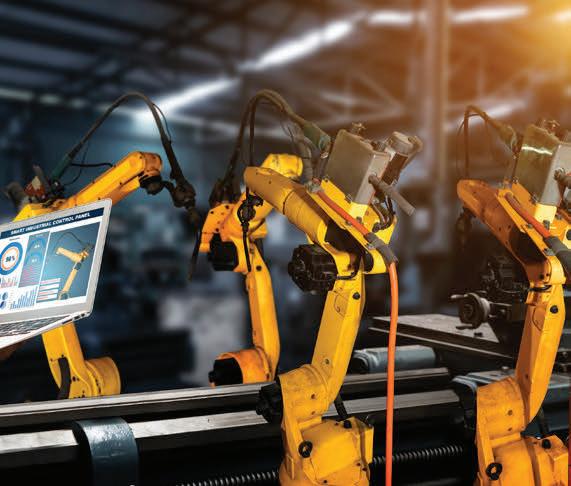

• Oil-less, lubricated models for all applications
• Compact, quiet, energy-efficient design
• Trusted in automation, packaging, lab & medical
• Coast-to-coast support from Wainbee experts
Meeting high performance demands
How metrology, design and collaboration drive resilient engineering.
BY SEAN TARRY
Within today’s industrial landscape, the standards associated with acceptable, and even expected, performance continue to rise. Machines need to function longer, operate faster and endure harsher environments - all without failure. Whether designing aerospace systems meant to withstand extreme thermal cycles, building semiconductor tools requiring nanometer-level precision, or crafting medical devices deployed in corrosive, remote settings, the challenge remains the same – to consistently meet and exceed the standards for the parts and products that are being developed.
This level of engineering excellence isn’t ensured by any single source. To achieve it, a holistic integration of data-driven metrology, strategic material choices, validated simulation and cross-functional collaboration is demanded, all fostered at the earliest stages of design.
Considering these things, and to better understand what’s required of design engineers who are responsible for meeting the demands of high-performance parts and components, we spoke with three leading experts - Gary Peacock, General Manager of Metrology Software at Hexagon; Gregory Reain, Dimensional Metrology Expert at Canada’s NRC; and JeanMarc Guindon, Director of Engineering at Enginuity. Combined, their insights offer some tips and inspiration for engineers developing for harsh or challenging environments, underscoring the fact that the best-performing machines are built not by guessing, but by measuring, iterating and working together.
From measurement to intelligence
For Gary Peacock, metrology has

evolved far beyond inspection and is quickly becoming a facet of any engineering and manufacturing company, feeding into decisions and direction outside of simple measurement.
“Metrology software is not just about measuring dimensions anymore,” he asserts. “It’s about transforming raw data into actionable intelligence - from information to context, to knowledge, and ultimately to wisdom.”
He describes this as a spiral of maturity, with each layer building on the last, converting reactive insight into predictive control. It’s a shift from detecting defects to preventing them.
And it’s made possible by integrating data across every domain, from CAD to machining to inspection. At Hexagon, the Nexus platform embodies this unified approach.
“When design intent, virtual inspection data and real-world feedback all live in one shared digital twin,” Peacock explains, “then designers understand how what they draw will actually be manufactured and checked. That transforms the entire design process.”
Peacock highlights how Hexagon’s Autonomous Metrology Suite helps design engineers, machine builders and OEMs achieve this level of data
Ensuring parts and components meet the demands of high-performance requires a holistic integration of engineering practices.
integration and consistency. For instance, Hexagon generates inspection routines automatically from CAD and PMI, fine-tuned to different CMMs across multiple sites, resulting in a level of consistency that used to take weeks. Nexus allows it to happen nearly instantaneous. And, as a result, explains Peacock, remote or disparate teams and colleagues can share in the same knowledge.
“One of Hexagon’s clients told us that their junior engineers learned much faster because the Autonomous Metrology Suite visualized inspection metrics virtually,” he explains. “They didn’t need a physical part to see what worked and what didn’t. This isn’t just about efficiency. It’s about democratizing quality and shifting inspection insight to the entire engineering team.”
A central role for AI
When it comes to the latest tools offering the greatest potential to enhance measurement and testing, Peacock immediately points to the use of AI as revolutionary. He recognizes the technology’s incredible capabilities to automate and predict. However, he suggests that we may be on the cusp of a whole new level of inspection and quality assurance.
“We’re already using AI to predict out-of-tolerance conditions and to suggest process adjustments,” he explains. “The next frontier is systems that not merely alert engineers to defects but automatically adapt tools and process parameters to prevent them. That’s what true resilience looks like.”
Designing with measurement in mind
With respect to ensuring the reliable performance of any given part, component or machine, Gregory Reain suggests that it begins with traceable, credible measurements. At Canada’s National Research Council, ensuring calibration traceability to SI units is foundational. Or, as Reain puts it, it’s something that’s entrenched in the NRC’s practices and processes because of the valuable purpose it serves.
“For high-performance systems, measurement isn’t optional, it’s part of the design itself,” he says. “Complex geometry is great, but if your feature
isn’t accessible by a probe, whether tactile or optical, then you lose traceability. It’s effectively un-measurable, and that creates enormous risk. Engineers should design with inspection in mind. If you can’t trace your result to SI units confidently, or if your measurement uncertainty dwarfs your tolerance, then you don’t know what your machine does in reality.”
To mitigate these types of issues,
he stresses clear and open early-stage communication across departments, urging engineers to share information and nuances about the projects they’re working on in order to improve efficiencies, reduce late-stage errors and confusion and accelerate timelines.
“A quick alignment between design and metrology can make a big difference,” he asserts. “Sometimes a part is perfectly manufacturable but
Next level hydraulic control
RMC200 Standard
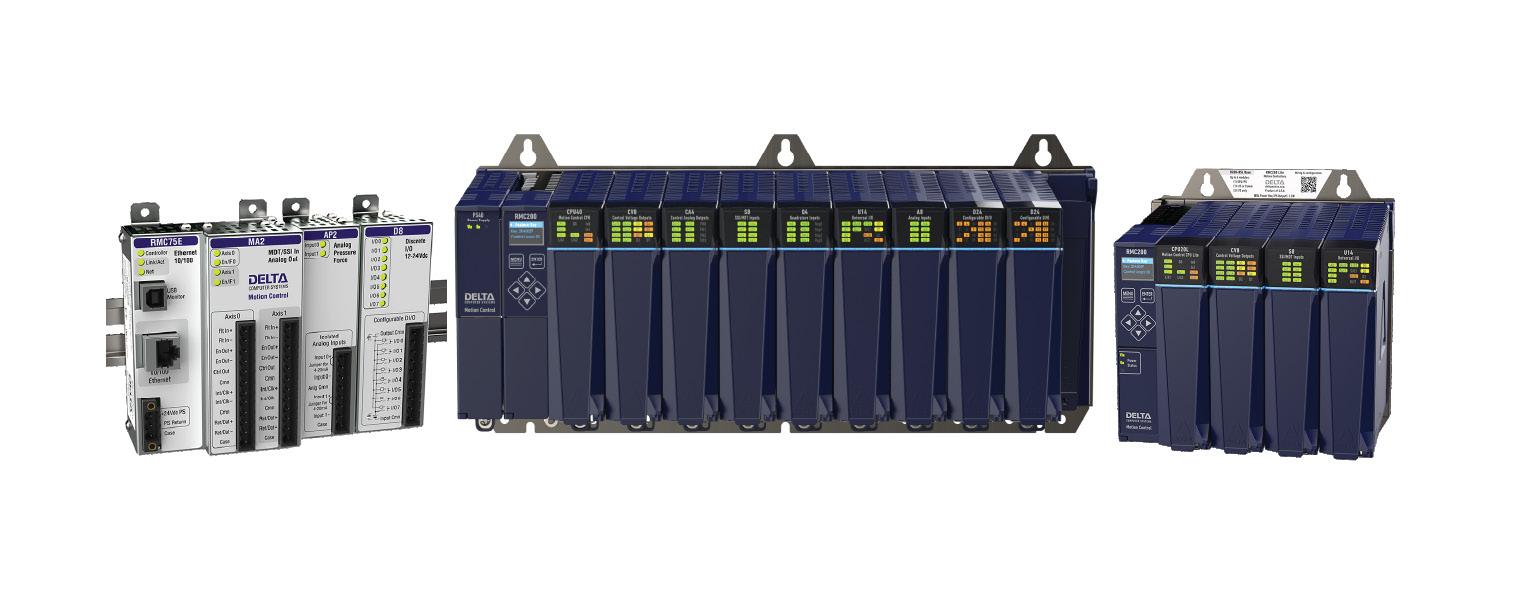
Fast, precise, simple and elegant.
Use Delta RMC motion controllers and graphical RMCTools software to simplify and improve complex motion. 1-50 axes of synchronized position, velocity and pressure/force control.
Visit our website for videos, case studies, and specifications. Find a case study of your industry and application.
Discover simple, fast, and precise electro-hydraulic motion at deltamotion.com
PATTERNS FOR TRUE RESILIENCE
While superior quality assurance involves a range of different perspectives and considerations, including software insights, measurement science and practical engineering, a set of basic principles converge, directing design engineers developing high-performance parts and components:
• 1. Metrology as a design driver: Start with quality in mind. Engineering isn’t complete unless measurements confirm performance. And those measurements must be planned at the beginning, not left up to QA at the end.
• 2. Data integrated across workflow: Centralized platforms like Nexus allow inspection results to inform design and machining decisions, enabling a truly predictive cycle.
• 3. Designing for inspectability: Features and datum schemes must be accessible to measurement tools. And measurement uncertainty must align with tolerance intent.
• 4. Virtual modeling and real testing: Powerful simulation tools allow early failure-mode analysis, but must be complemented with test hardware, especially when environmental conditions or long-life wear matter.
• 5. Material and design simplicity: Match materials for thermal compatibility, minimize unnecessary constraints and validate tolerances in collaboration with machinists and metrologists.
• 6. Future-ready practice: Emerging trends like embedded digital metrology and AI-assisted inspection are becoming central, but only if they’re grounded in validated unit standards and accessible data.

impossible to inspect, because the datums or datum scheme were designed for aesthetics rather than accessibility.”
Reain also shares his views on measurement uncertainty and the challenges that it can pose, urging engineers to think beyond the nominal tolerance. He explains that if a component tolerance is ±5 microns and the measurement uncertainty is ±3 microns, then the user is operating dangerously close to ambiguity. The difference between a pass and a failure in that instance can be statistical and no longer deterministic. It’s the reason he advocates documenting and communicating uncertainty as a design metric.
“We used to rely on the 10:1 ruleof-thumb for measurement accuracy,” he explains. “But that approach breaks down at micro tolerances.You must actively model uncertainty and integrate it into design decision frameworks.”
Regarding newer technologies like 3D scanning and their potential to assist design engineers, machine builders and OEMs arrive at more concise measurement, Reain remains cautiously optimistic.
“They’re valuable tools, but currently less regulated in terms of repeatability and traceability,” he asserts. “A scanning device may produce dense data, but unless you understand its measurement uncertainty and calibration, that data isn’t necessarily actionable.”
However, he looks ahead with anticipation to the next chapter - digital
metrology, which will allow measurement device calibration, traceability and capability to be embedded into the product lifecycle. In fact, he suggests that it poses the potential to completely alter the way quality assurance is perceived and leveraged going forward.
“In the future, inspection devices will know exactly what they’re capable of measuring, and design systems will trust, or adapt, based on that metadata,” he explains. “That will fundamentally change how quality gets integrated.”
Engineering for realworld durability
Data, metrology and simulation are vital. But real performance hinges on physical reality. JeanMarc Guindon, Director of Engineering at Enginuity, is no stranger to this perspective and warns that real-life variability in materials, environment and wear is often overlooked during the design process, leading to unnecessary errors and delays.
“We’ve seen failures because designers matched aluminum and steel without considering thermal expansion differences,” he says. “Everything fits in the shop. But in minus 40°C temperatures or high humidity, seals bind and fail. Resilience isn’t built by complexity. It’s built by understanding your environment, designing for real lifecycle, and testing repeatedly. A clean drawing means nothing if it fails under actual service conditions.”
In addition to material compatibility
The COVE 750te SEAlift. Photo by Daniel Baugh
criteria including strength, temperature resilience and corrosion resistance, maintainability over time is also a key criterion. And, as Guindon points out, ensuring maintainability comes with its own set of considerations/
“If your equipment runs unattended in harsh environments for tens of thousands of hours, you must ensure that it’s serviceable,” he says. “That means making sure there is simple access, modular parts and realistic tolerances.”
Guindon’s team uses a significant amount of simulation, including thermal modeling, fatigue analysis and vibration testing, to de-risk early designs. These tools accelerate iteration and reduce the need for expensive physical prototypes. However, he’s quick to note that simulation isn’t a crutch. He recognizes that it might amplify insights for the user but strongly recommends that they be validated for accuracy.
“Small subsystems, like bearing pivots or hydraulic seals, are built and run for short durations under real loading or temperature cycles,” he explains. “These quick tests reveal surprises that simulations miss. A vibration mode, a stress concentration - those are harder to see in virtual models.”
Weight optimization is also critical, says Guindon, particularly in aerospace or subsea systems. He supports using topology optimization to systematically remove unnecessary material, and states that he’s seen structures lose as much as 30 per cent of mass without compromising strength. That said, however, he’s wary of overdesign.
“Sometimes, the worst failures come from parts that are too precise,” he asserts. “Extra bearings, over-constraint, tight fit-ups - it can all introduce premature wear or vibration failure. Simple often outperforms complex, especially in extreme environments.”
The road to engineering excellence
As industries continue to push the envelope concerning what’s possible, whether in additive-manufactured aerospace, biocompatible implants, or robotics in extreme environments, the safety net for performance lies increasingly in integrated engineering practices.
As a result, today’s leading-edge machines will no longer be defined
by their parts, but by their data continuity, inspectability and adaptability. They will fail less often, not through over-specification, but through proactive design, feedback loops and smart simplification. And, when design, manufacturing, metrology and analysis operate in harmony, aligned with AI, traceable standards and multi-disciplinary teamwork, a backbone of engineering resilience is formed, helping
to realize Peacock’s vision of a spiral of maturity.
“When we think of metrology as strategy, not just validation, we open new capabilities. You reduce operator error, accelerate training, and even start tools adapting themselves based on inspection feedback. And then we’re no longer simply checking parts. We’re enabling systems to adjust in real time.”|DE
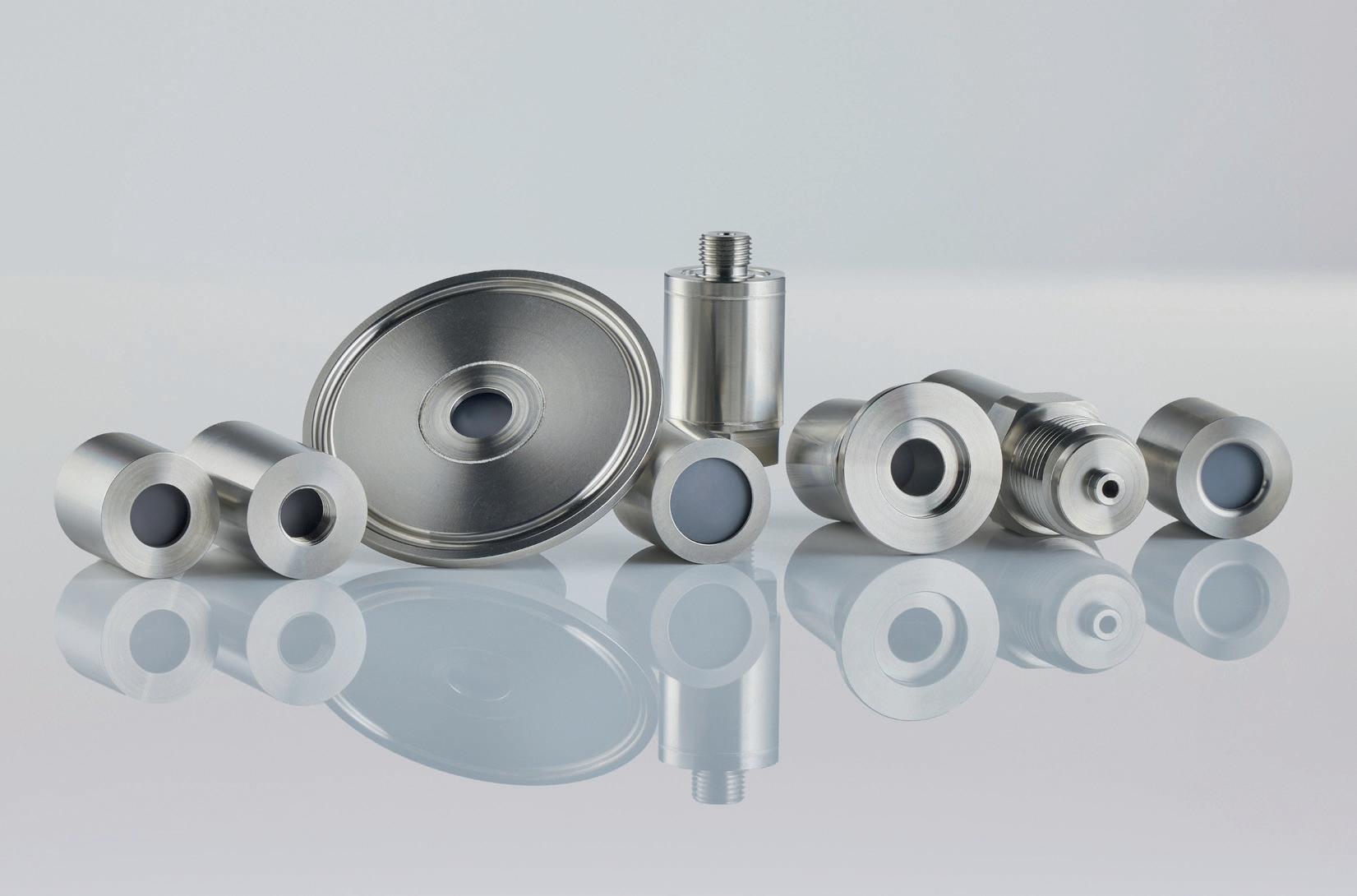
Endress+Hauser Sensors & Components
Your partner for customized pressure and radar sensors
Do you value expertise and quality? We help you find the best possible solution for your product. Our pressure sensors and radar sensors can be customized and integrated into numerous applications. They offer precise measurements, digital interfaces and require hardly any energy.
Visit us at booth 929 of Advanced Design and Manufacturing Expo in Toronto, Canada: October 21–23, 2025.
We look forward to seeing you.
Want to know more? Use the code to get more information.
CANADA: A GLOBAL LEADER IN ADVANCED MANUFACTURING
How advanced technologies are transforming industry and making design Engineers more important than ever.
BY JAYSON MYERS, CEO, NEXT GENERATION MANUFACTURING CANADA (NGEN)
It doesn’t take very long walking around Hannover Messe, the largest industrial technology show in the world, to be impressed by how advanced digital, manufacturing and materials technologies are transforming the business of manufacturing. It’s quite a different experience than only ten years ago when the fair was packed full of machinery and equipment. Don’t get me wrong. There’s still plenty of that. But now the equipment tends to be fully automated, interconnected, modular, reconfigurable and smart. And the exhibitors at the fair are not only machine manufacturers but companies specializing in digital solutions, artificial intelligence and connectivity. And often all.
Canadian innovation
This year it was Canada’s time to shine as partner country at Hannover Messe, with over a thousand Canadians attending in early April. And while there, we did our best to showcase everything this country has to offer when it comes to advanced manufacturing capabilities in fields like automation and robotics, AI, networks, quantum computing, advanced materials, cleantech and hydrogen.
We made quite an impact, too! Germany’s Chancellor was one of many visitors who tried their luck taking a shot on net against a robo-goalie developed by an Ontario high school robotics team. (It was a save!) A Canadian college team walked away as winners of an international mechatronics contest. Canadian companies also won awards for the best robotics and industrial AI applications at the fair. Many came home with good leads for new customers, suppliers and innovation partners. In short, we showed the world that Canada is a leader in advanced manufacturing – and the world paid attention.
Global manufacturing changes
Hannover Messe was also an opportunity for some wide-ranging discussions among the more than 300,000 international visitors about the things that changing concerning global

manufacturing. Of course, Trump’s tariffs were on the agenda. But, even without that threat, there was still lots to discuss about how advanced technologies are reshaping industry. There’s always plenty of fascination about the technologies on display at Hannover and their use cases in every field of industry. What becomes apparent very quickly though, is that the future for manufacturers and technology providers alike is not just about getting a product, service, or technology out the door. It’s about adding value for customers through new and improved products and services, improved process efficiencies and flexibility, quality enhancements and faster throughput and delivery time to maximize customer satisfaction. It’s the solution that new technologies offer customers – and their customers’ customers – that truly differentiates companies from their competitors and creates the value proposition for business growth.
Digital technologies are revolutionizing manufacturing
Today every product or piece of equipment is potentially a data platform. The solutions that manufacturers need, and can themselves offer their customers, are based more and more on how data is gathered, analyzed and mobilized in product and process innovations. Twelve years ago, when Industry 4.0 was first introduced at Hannover Messe, the focus was on connectivity. Now, it’s all about AI. Artificial intelligence, and more specifically applications of machine learning, computer vision and generative AI, are enabling advances in product and process design and modeling, prototype development, predictive and prescriptive maintenance, quality control, autonomous robotics and automation systems, materials, energy, warehouse management and supply chain optimization.
AI lessons
AI was front and centre at Hannover this year. Discussions often revolved around best practices in AI deployment, and
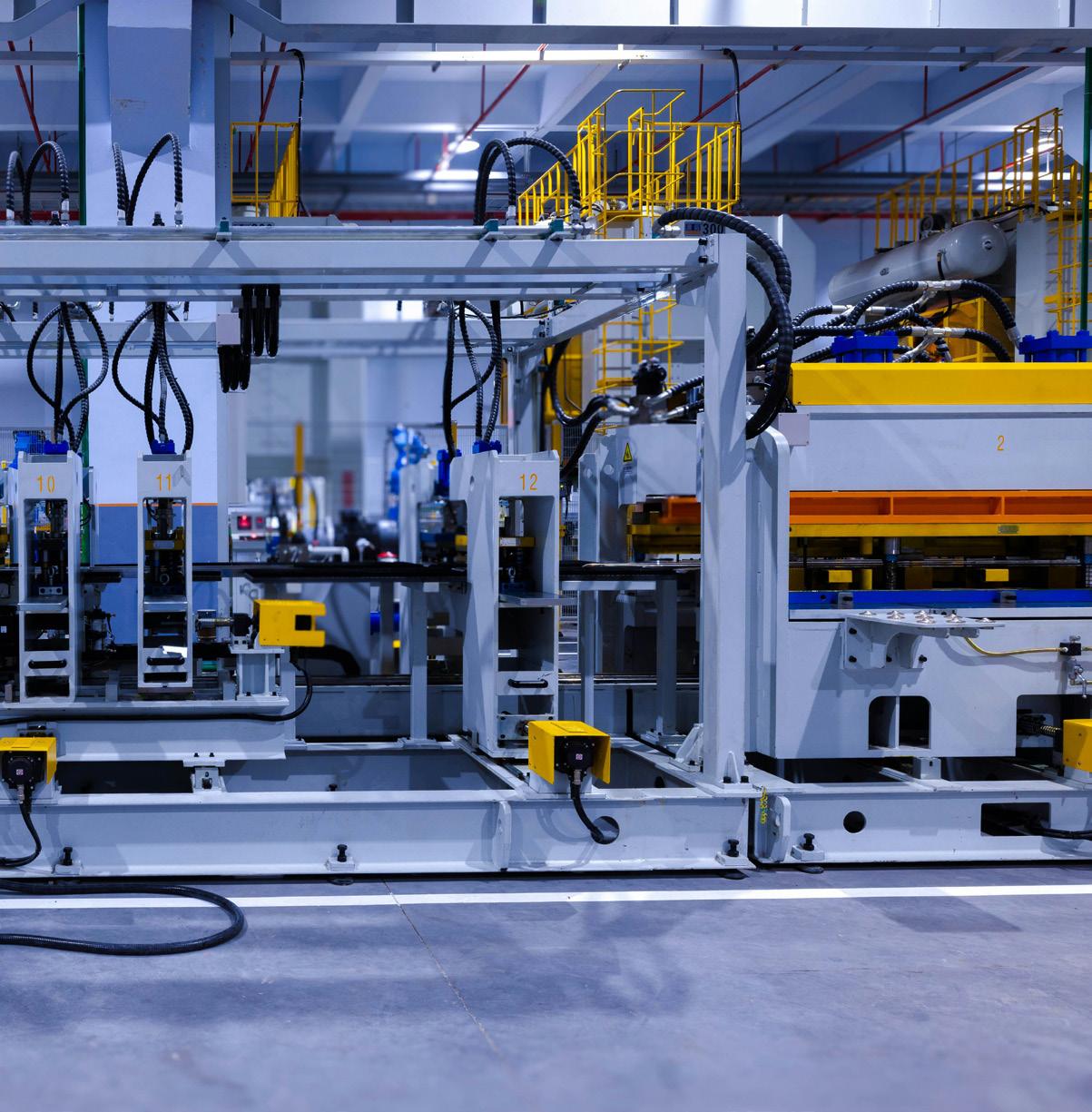
there were some valuable lessons to be learned.
The first is that AI is rarely used in manufacturing as a stand-alone technology. On the factory floor, AI applications depend on sensors, IIOT connections, computing and data storage capabilities, and cybersecurity protections. Similarly, AI is often embedded in other technologies like automation, robotics, vision systems and design and modeling software. Industry solutions require an approach that integrates advanced technologies with existing production systems. And because individual companies rarely have all the capabilities for effective deployment, collaboration becomes a key factor for success. For manufacturers, innovation partnerships are more important than ever.
Another takeaway is that AI is not a plug-and-play technology. Far from it. Successful adoption and use of AI depend on access to high quality, reliable, and consistent data. AI systems need to be trained – and that takes time. Data must be stored and protected. Applications must be maintained and updated on a regular if not continuous basis over the life cycle of their deployment to deliver improved performance and profitable business outcomes.
Challenging conventions
AI is challenging some very long held assumptions about manufacturing management and the business of manufacturing itself. It is opening the possibility of new value streams from services, smart product enhancements, and intellectual property creation based on data analysis. AI is also turning operations management on its head. It can be deployed to improve processes. It can also be used to identify those processes that need to be improved and identify better alternatives. In fact, what many companies are finding is that unless AI applications are being used to design and develop new production and business processes, it is often difficult to achieve the returns necessary to offset the long-term costs of AI investments.
Design engineering at the heart of the action
Whether it’s a matter of characterizing and working with new materials, designing and developing new products and services, or re-inventing processes and business models, AI has already become a powerful tool in the creation, testing, iteration and improvement of design concepts, prototypes and full-scale production systems.
Design engineers now need to tack data analytics and digital systems architecture on to their list of essential knowledge. It will be design engineers who translate the business requirements of customers into how technologies, machinery and equipment should operate. Conversely, they will be at the centre of the collaborations needed to help translate the capabilities of advanced technologies like AI-enabled systems into new business models and the design, development and operating processes required to make them a reality.
More opportunities
Meanwhile, Canadian companies will have more opportunities to see what’s occurring internationally in industrial AI and machine building, and to connect with potential customers, suppliers and partners from around the world. NGen will be back again in Hannover very soon – at EMO, the international technology show for machine tool manufacturers at the end of September, and at Hannover Messe in April next year. Visit www.ngen.ca/emo-hannover-2025 to learn more. |DE
WHEN PRECISION MATTERS.





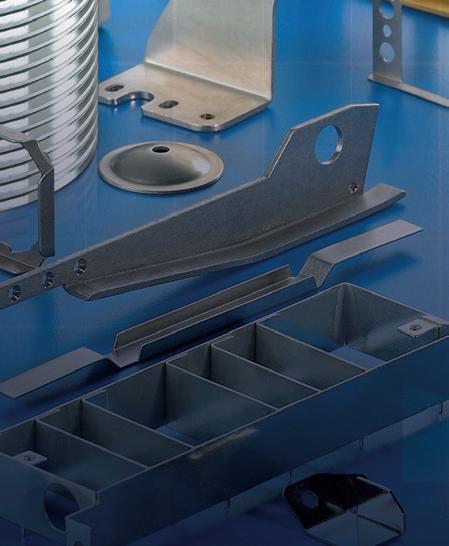
Human Machine Interface operator station for advanced manufacturing production line.
Reimagining fluid power: smart, sustainable, and ready for the future
Intelligent controls, energy-efficient systems and digital integration are transforming the future of fluid power in machinery.
BY SEAN TARRY
Fluid power has traditionally been synonymous with rugged force and brute capability. But with respect to today’s intelligent machines and precision automation, the technology is undergoing a major shift. Hydraulics and pneumatics are no longer isolated systems - they’re being transformed into digitally integrated subsystems that work in conjunction with control software, electronics and sensor data. Design engineers now face an evolving landscape where fluid power is expected to be not only powerful, but also smart, efficient and sustainable. In fact, according to Ted O’Donnell, Business Manager for Mobile Applications at Bosch Rexroth Canada, the fluid power industry has moved far beyond mechanical pumps and cylinders.
“The integration of electronics into hydraulic components has been ongoing, but the most practical advancements today revolve around digitalization,” he says.
He goes on to explain further that one of the most important trends is the electrification and hybridization of fluid power systems. Variable speed motors and electric drives are increasingly used as prime movers, allowing hydraulic systems to draw power only when needed. These changes are not only improving the performance of machines but also drastically reducing energy consumption and emissions in both mobile and industrial applications.
Software-defined hydraulics

and embedded intelligence are also playing a pivotal role. Where hydraulic systems once relied on mechanical linkages and fixed operating parameters, today’s systems can be fine-tuned through code with algorithms now managing flow, pressure and timing with unprecedented precision.
“We’re seeing hydraulic components equipped with sophisticated software and embedded electronics that allow for far greater adaptability, diagnostics and control accuracy than ever before.”
How digitalization and IIoT are redefining fluid power
The rise of digitalization and the Industrial Internet of Things (IIoT) has significantly reshaped how fluid power systems function within industrial and mobile machinery. Fluid power was once simply a means of transferring
Advances in fluid power are reshaping the way industries look at hydraulics and pneumatics in machinery.
energy. Today, it’s becoming a smart, self-aware component of the machine’s brain. This transformation is enabling new levels of responsiveness, customization and predictive intelligence. In fact, O’Donnell believes that connected, digital fluid power is removing traditional design constraints and enabling faster, more modular development.
“Digitalization has fundamentally changed fluid power from a ‘dumb power source’ to an intelligent and interconnected part of a machine,” he says. “Software has replaced hardware complexity, allowing greater design freedom and faster development cycles.”
Real-time adaptability, he explains, is one of the biggest benefits yielded by digitalization. With embedded sensors and software-defined controls, fluid power systems can adjust performance
dynamically to accommodate changing load conditions or application needs. Mechanical adjustments that once required downtime and manual recalibration can now be handled digitally, often through a simple software update.
“Smart components can now adjust in real time,” he says, “offering precise motion control and parameter tuning without mechanical intervention.”
In addition, IoT sensors embedded in hydraulic systems collect vital performance data, monitoring pressure, temperature, flow, vibration and even oil quality. This data can be analyzed for predictive maintenance, reducing downtime and optimizing service intervals.
“With advanced analytics, machines can identify inefficiencies, optimize pump speeds and pressures, and reduce unplanned downtime,” he says. “This level of precision is also critical for enabling autonomous systems and robotics.”
Opportunities for innovation in machine design
As machinery becomes more advanced and interconnected, new opportunities are emerging that allow for a rethink of the role fluid power plays in system architecture. Instead of viewing it as a standalone subsystem, design engineers are now integrating hydraulics and pneumatics into adaptive, intelligent systems that can optimize themselves in real time.
According to O’Donnell, the next three to five years will bring significant changes concerning the ways in which machines are designed and operated. He predicts a surge in autonomous, self-optimizing fluid power systems that are capable of learning from their environment, predicting performance changes and adjusting automatically to meet varying demands.
“We’re entering a phase where hydraulic systems are not just tools, they’re self-optimizing ecosystems,” he asserts. “We’ll see more systems that can learn, predict failure, self-adjust, and even self-diagnose to ensure optimal performance and efficiency.”
Sustainability through smarter system design
As sustainability continues to grow in importance as a core engineering value, companies across the industry are rethinking the way they design and implement fluid power systems. From more efficient components to complete energy-saving architectures, Bosch Rexroth is leading efforts to minimize environmental impact at every stage of a system’s life cycle.
“Every component we’ve developed in the last decade emphasizes sustainability,” says O’Donnell. “We’ve made double-digit improvements in power density and efficiency, which means less material usage and lower energy consumption.”
Having said this, however, he points out that the biggest gains with respect to sustainability come from looking beyond the component level. In fact, O’Donnell estimates that component production and operation only account for about one per cent of the carbon footprint generated over the lifetime of a hydraulic system.
“The real impact when we’re talking about sustainability comes from the ability to designi system architectures that maximize efficiency over the machine’s entire life cycle,” he explains.
Dispelling myths and misconceptions
Despite these technological advances, O’Donnell continues, many engineers still view hydraulics through an outdated lens. Common assumptions, including the fact that hydraulics are leaky, inefficient, or imprecise, no longer reflect the reality of today’s fluid power systems.
“That was true of older systems,” he says. “But modern hydraulics with variable speed drives and electro-hydraulics offer energy efficiency comparable to electric alternatives. With improved sealing, tighter tolerances and better materials, clean and leak-free systems are entirely achievable. And smart diagnostics mean you can fix problems before they become failures.”
Fluid power for the digital era
From predictive intelligence to sustainable design, fluid power is undergoing a profound evolution. Driven largely by innovations in software, digital control and hybrid systems, O’Donnell says that hydraulics and pneumatics are being reimagined not just as mechanical utilities, but as smart, scalable technologies that will power the next generation of machinery.
“We’re no longer just moving oil through machinery. We’re enabling intelligent, adaptable machines that are being designed to think, respond and perform with unprecedented precision and efficiency.” |DE


RELIABLE NETWORKING FOR HARSH ENVIRONMENTS
Antaira’s new LNX-0800-M12-67 Series is an 8-port IP67-rated Fast Ethernet switch designed for railway and industrial automation networks. Featuring rugged M12 connectors and a wide -40°C to 75°C temperature range, it ensures reliable performance in harsh environments. Compliant with EN 50155 standards, it supports onboard, trackside and factory applications. Flexible 12–48VDC input, compact design, and dual mounting options make it ideal for scalable, space-constrained, mission-critical deployments. www.artaira.com
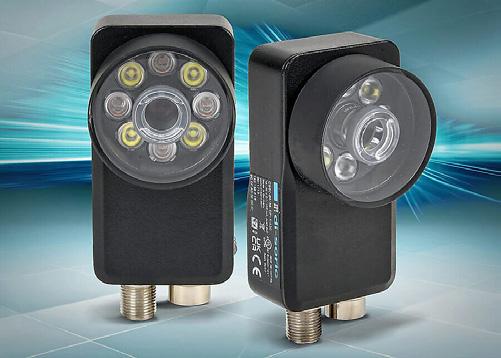
SMART CAMERAS FOR AUTOMATION
AutomationDirect’s new di-soric 2D S-mount cameras combine powerful imaging with sensor functionality for flexible automation tasks. Featuring interchangeable M12 lenses (f/4.0 or f/8.0), they support detection, measurement, localization and code reading. And software and web HMI allow for scalable, remote-configurable solutions for precision and adaptability in vision-guided applications. www.automationdirect.com
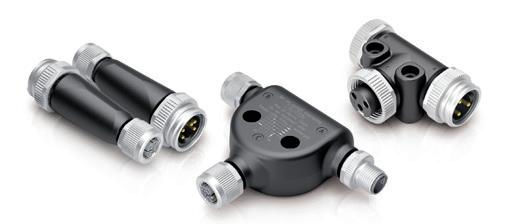
CONNECTOR SOLUTIONS FOR TIGHT SPACES
binder recently introduced its compact M12 Power connectors designed to meet the growing demand for space-saving, high-performance solutions in industrial equipment. These connectors deliver up to 630 V, support AC/DC applications via coded versions (S, T, K, L), and offer IP67/IP68 protection. Ideal for compact machinery, motors and lighting systems, M12 Power connectors provide reliable power transmission while enabling easy on-site assembly and integration in decentralized automation environments. www.binder-usa.com

UNIVERSAL CONNECTOR SAVER FOR SATELLITES
Cinch Connectivity Solutions introduces its brand-new QPS Universal Connector Saver (SQM-4733-MF-29M-02), delivering reliable, space-qualified performance for satellite engineers. Designed for SMA, 3.5mm, and 2.92mm interfaces, it operates up to 40 GHz with low VSWR and a strong and durable stainless-steel construction. Compliant with NASA outgassing standards, ithe QPS Universal Connector Saver is ideal for thermo-vacuum testing, pre-flight evaluation and all-orbit platforms. Proven on major missions, it’s now available through DigiKey and Mouser for fast, dependable system integration. www.cinch.com
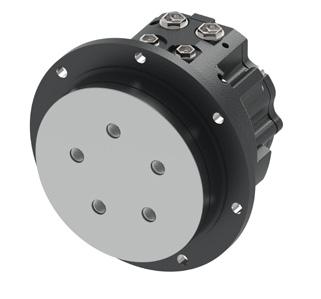
SMOOTHER PERFORMANCE FOR ROAD ROLLERS
Danfoss’ Thorx CLM 5 C cam lobe motor has been engineered for road roller drum drives. Featuring 92% total efficiency, it delivers smoother low-speed rotation for improved road finishing and extended component life. A robust bearing system eliminates shaft seal leakage, while a compact, integrated parking brake ensures safe emergency braking. Interchangeable with existing drum drive motors, the CLM 5 C simplifies integration and enhances performance in compact compaction equipment up to 3.5 tons. www.danfoss.com

HEAT-RESISTANT VACUUM POWER
EXAIR’s new 3/8 NPT High Temperature Threaded Line Vac has been designed to ensure the efficient conveying of gases and fine materials in environments with temperatures up to 900ºF (482ºC). Made from 303 or 316 stainless-steel, it resists corrosion and heat while fitting into tight spaces. Using compressed air, it generates strong vacuum flow with no moving parts, making them Ideal for use within high-heat applications like flue gas sampling, soot removal and fine material conveyance. www.exair.com

COMPACT PRECISION X-Y MOTION
IKO’s new PD…S X-Y parallel drive stage offers design engineers and machine builders precision positioning with a unique design that maximizes workspace accessibility. Its dual parallel shafts convert linear motion into X-Y movement, eliminating the need for bulky stacked actuators and fixed motor interference. And because motors are mounted in one direction, it enables open, flexible machine designs. In addition, the compact, low-profile unit features maintenance-free IKO C-Lube guides and also supports diagonal and circular motion.
www.iko.com

SIMPLIFIED ETHERNET FOR SMART INDUSTRY
KYOCERA AVX’s new 6780-000 Series T1 Industrial SPE connectors and cable assemblies offer users compact, cost-effective Ethernet and power transmission over a single twisted pair. Designed for use within industrial automation, sensor networks and smart infrastructure, these IP20-rated connectors help to reduce system complexity and board space by 45% versus RJ45. Supporting PoDL, 1Gb/s up to 40m, and robust environmental specs, 6780-000 Series T1 Industrial SPE connectors and cable assemblies meet C 63171-6 and IEEE 802.3 standards for efficient next-generation IIoT deployments.
www.kyocera-avx.com

PNEUMATIC PERFORMANCE FOR TIGHT SPACES
Metal Work’s ISO 6432 non-repairable pneumatic cylinders and heavy-duty dual guide rod cylinders for compact, precision-driven automation. The ISO 6432 models are ideal for space-constrained applications, featuring self-lubricating bushings, magnetic pistons and universal mounting in bore sizes from 12–25mm. The dual guide rod versions handle sideloads with superior stability and accuracy, available in bores from 16–63mm and strokes up to 400mm. Both support 145 psi and are brand-interchangeable. www.metalwork.org
COMPACT POWER FOR MICRO MOTION

Moticont’s new LVCM-013-013-03M miniature linear servo motor delivers high resolution and up to 4.48 N peak force in a compact 12.7 mm diameter size. With zero cogging, low inertia and 3.2 mm stroke, this brushless actuator is ideal for precision applications like scanning, haptics and wafer handling. Designed for servo control with high repeatability, it’s a space-saving alternative to pneumatics and supports easy integration via threaded mounting holes. www.monticont.com
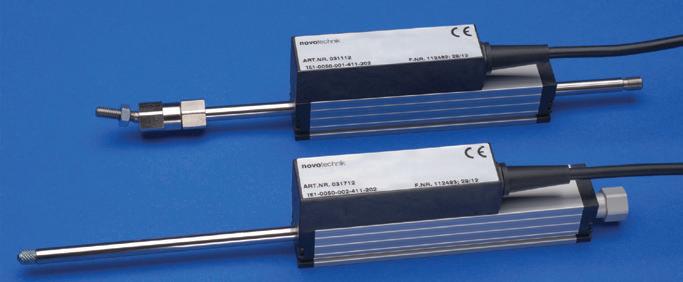
ACCURATE POSITION SENSING SIMPLIFIED
Novotechnik’s TE1 Series absolute linear position sensors feature integrated signal conditioning for current or voltage outputs, enabling long cable runs without signal loss. Offering 25 to 150 mm measurement ranges with unlimited resolution and 0.002 mm repeatability, they provide ±0.075% linearity and four output options. Compact (18 mm) and durable, the TE1 Series suits precise, reliable position feedback in demanding industrial applications. www.novotechnik.com
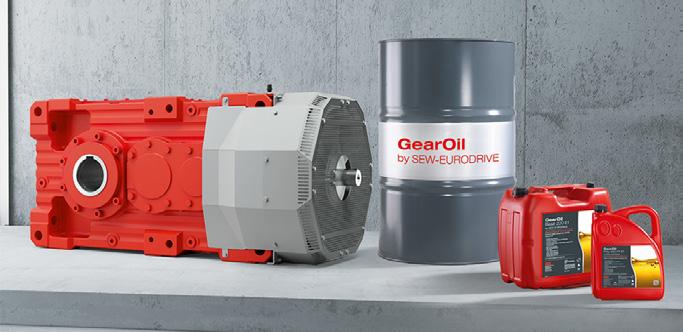
SYNTHETIC GEAROIL FOR INDUSTRY
SEW-EURODRIVE now offers design engineers, machine builders and OEMs
GearOil - a high-performance synthetic lubricant that’s been engineered specifically for its heavy industry gear units like the X.e and MC series. Designed to ensure optimal wear protection and exceptional thermal stability for users, SEW-EURODRIVE’s
GearOil helps to extend gear life, reduces oil changes and eliminates the initial 500-hour oil change for machine and equipment. And because it’s fully compatible with SEW’s full range of lubrication systems, it supports demanding applications such as mining, steel and energy, ensuring maximum uptime and reliability.
www.seweurodrive.com

COMPACT SIGNAL CONDITIONING POWER
AutomationDirect’s WAGO JUMPFLEX 857 series signal conditioners and temperature transmitters feature a compact 6 mm-wide housing, converting voltage, current, RTD and thermocouple signals with configurable input/output ranges. Available in single, dual-channel and splitter versions, temperature models for WAGO’s JUMPFLEX 857 series signal conditioners include built-in diagnostics for faster troubleshooting. In addition, push-in connections and jumper slots simplify wiring, reducing errors and maintenance time.
www.automationdirect.com
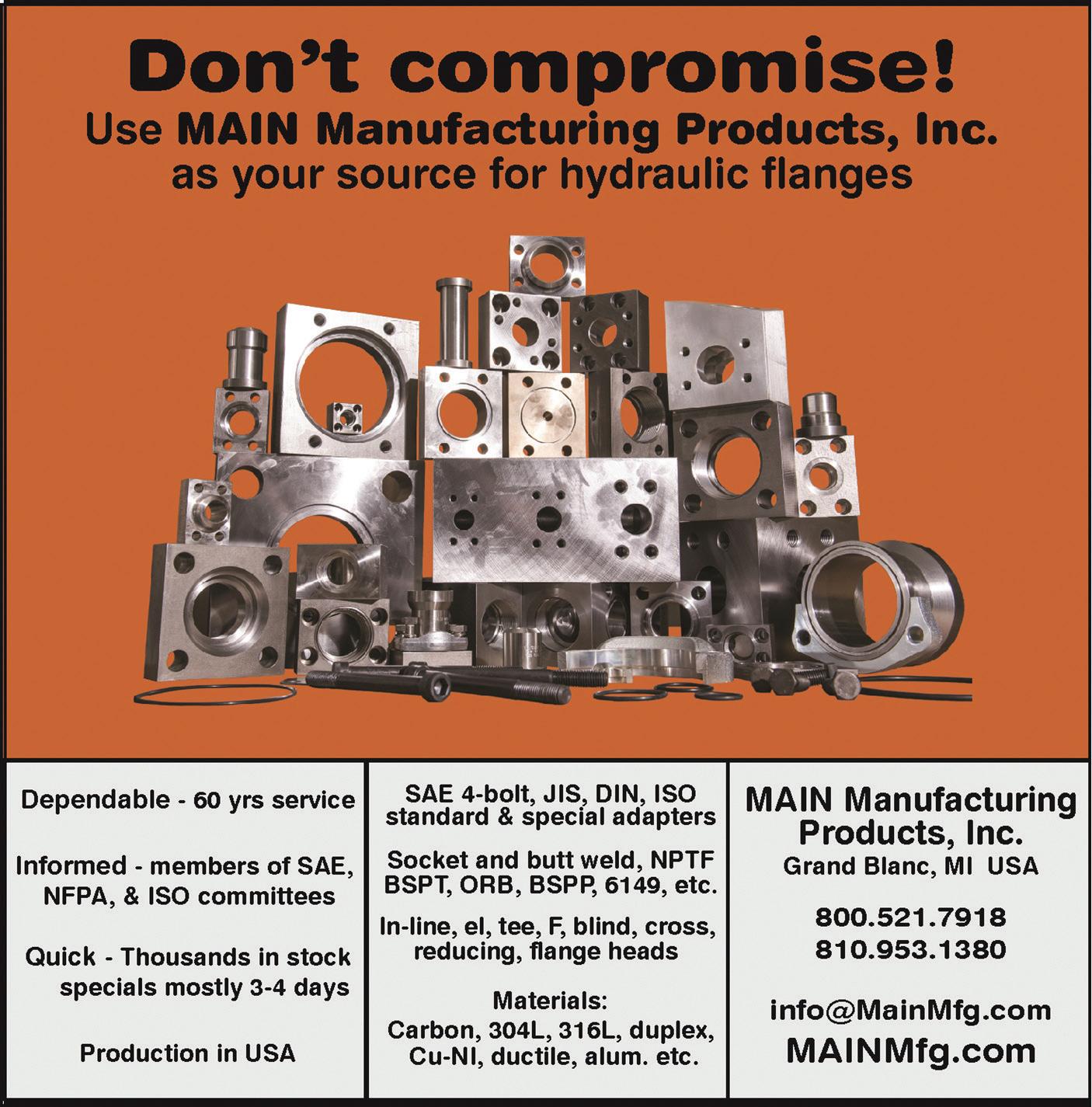
Robotics-driven construction to tackle national crisis
Automated building systems offer scalable solution to Canada’s growing housing crisis.
BY SEAN TARRY
In an ambitious move meant to address Canada’s increasing housing shortage, a groundbreaking partnership between McMaster University’s Faculty of Engineering and construction automation leader Horizon Legacy is helping to set a new direction for mid-rise building construction. With support from an NSERC Alliance Advantage Grant, the team is developing onsite robotics systems designed to deliver sustainable, scalable and high-performance concrete housing solutions for Canadian communities.
Led by Professors Mohamed Ezzeldin, Cancan Yang and Ousmane Hisseine of the university’s Department of Civil Engineering, the multidisciplinary initiative is not only focused on developing next-generation construction technologies, but also on creating the data, tools and performance standards that are required in order to integrate automated building systems into national codes and CSA standards.
Technical innovation backed by research powerhouses
The project is harnessing the capabilities of several advanced research centres, including McMaster’s Applied Dynamics Lab (ADL) and its newly launched Additively Manufactured Homes for Mobility and Equity (AM-HOME) Lab,

alongside Horizon Legacy’s Construction Automation Lab. Combined, these facilities are actively exploring ways to make 3D concrete printing and onsite robotics viable for the construction of multi-storey residential units in Canada’s diverse climates. Nd, according to Hisseine, the group is already well on their way toward achieving those goals.
“The Applied Dynamics Lab has been instrumental in advancing our understanding of material innovation and structural performance,” says Hisseine. “Its legacy in large-scale experimental research, combined with our ongoing work in sustainable concrete technologies, provides a strong foundation for this partnership. By integrating ADL’s capabilities into this project, we’re able to rigorously develop, test and validate automated construction methods that
are not only efficient but also resilient and environmentally responsible.”
At the AM-HOME Lab, Professors Ezzeldin and Yang are focusing on combining 3D printing, prefabrication and modular techniques to accelerate the construction of customizable housing units. In order to do so, however, they must first clear a few critical technical hurdles, including ensuring structural safety in seismically active regions, adapting designs to local weather extremes and withstanding impact or blast loads.
Real-world applications and industry impact
The technology that’s being developed as part of the group’s project could significantly reduce construction time, labour demands and material waste - three major barriers currently slowing the delivery of housing. By
validating robotics-based construction methods for integration into Canada’s National Building Code, the research team hopes to make automated building not just a technological novelty but a national standard. In fact, Ezzeldin believes that it’s a standard that will be set sooner rather than later.
“The body of knowledge generated at AM-HOME will be instrumental in developing standardized performance test protocols and design provisions for integration into the National Building Code of Canada and CSA standards,” says Ezzeldin “This technology transfer will help bring onsite robotics and 3D printing to maturity, enabling digital concrete to truly transform Canada’s construction sector and support a more sustainable future.”
A partnership built on shared vision
The collaboration with Horizon Legacy, a firm with over 70 years of experience in commercial and residential projects, provides the industrial expertise that will allow McMaster’s team to turn their research into practical, scalable tools.
And as Canada searches for long-term housing solutions, this McMaster-Horizon collaboration could prove to represent a major step forward. By merging academic research with industrial application, the team may be on the verge of reshaping the future of construction. |DE
McMaster Engineering research and Horizon Legacy team members
Photo courtesy of McMaster University.
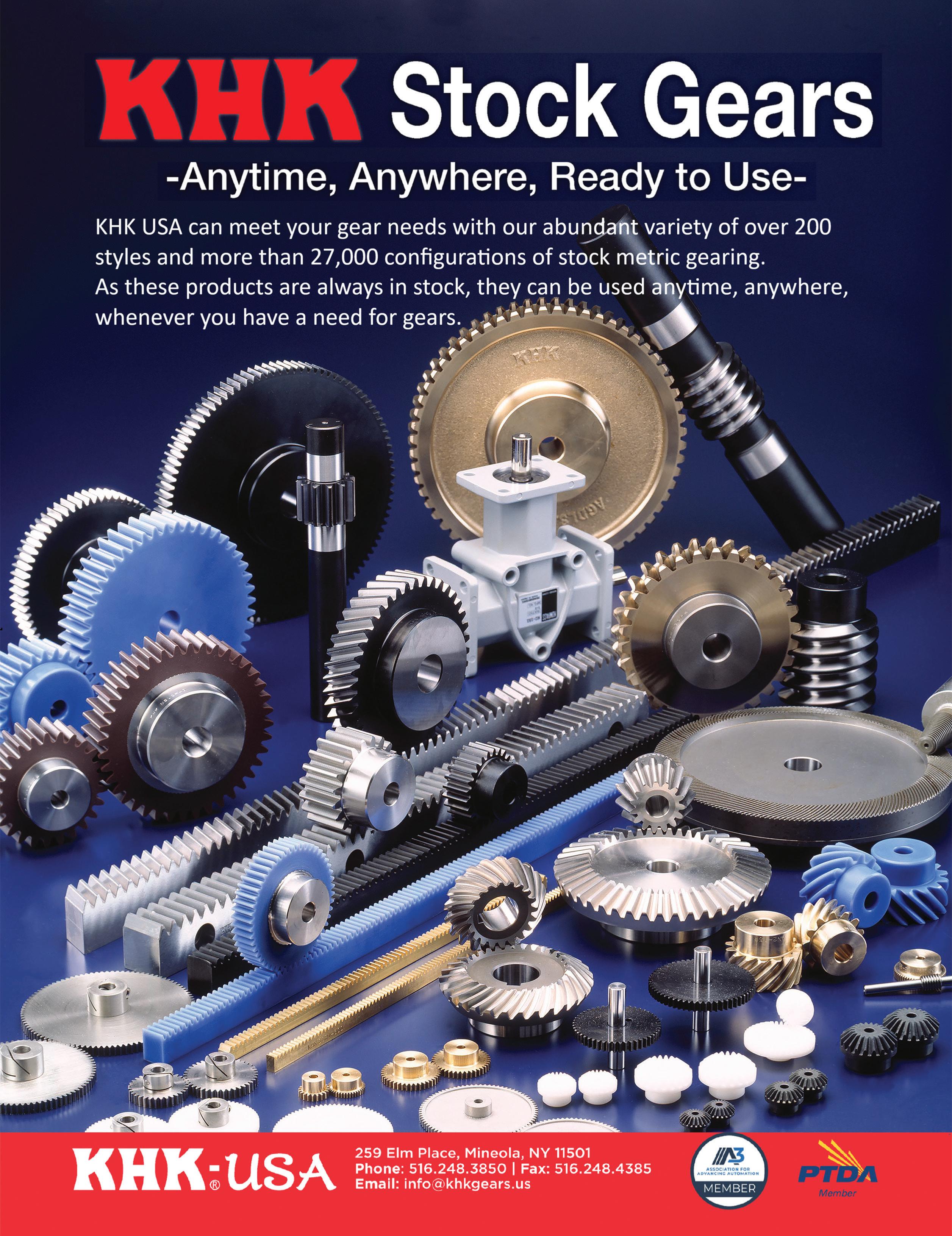


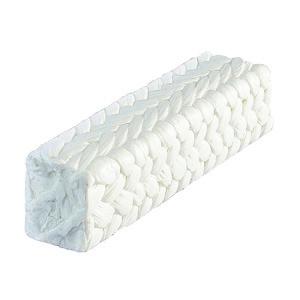

In the Food & Beverage industry, there’s no room for compromise. Daemar’s Components are designed to withstand harsh washdowns, prevent contamination & meet the highest hygiene standards. From Metal Detectable Seals to FDAcompliant materials — we help keep your production clean, safe, and running.
